Psychosocial interventions for self-harm in adults
- PMID: 33884617
- PMCID: PMC8094743
- DOI: 10.1002/14651858.CD013668.pub2
Psychosocial interventions for self-harm in adults
Abstract
Background: Self-harm (SH; intentional self-poisoning or self-injury regardless of degree of suicidal intent or other types of motivation) is a growing problem in most counties, often repeated, and associated with suicide. There has been a substantial increase in both the number of trials and therapeutic approaches of psychosocial interventions for SH in adults. This review therefore updates a previous Cochrane Review (last published in 2016) on the role of psychosocial interventions in the treatment of SH in adults.
Objectives: To assess the effects of psychosocial interventions for self-harm (SH) compared to comparison types of care (e.g. treatment-as-usual, routine psychiatric care, enhanced usual care, active comparator) for adults (aged 18 years or older) who engage in SH.
Search methods: We searched the Cochrane Common Mental Disorders Specialised Register, the Cochrane Library (Central Register of Controlled Trials [CENTRAL] and Cochrane Database of Systematic reviews [CDSR]), together with MEDLINE, Ovid Embase, and PsycINFO (to 4 July 2020).
Selection criteria: We included all randomised controlled trials (RCTs) comparing interventions of specific psychosocial treatments versus treatment-as-usual (TAU), routine psychiatric care, enhanced usual care (EUC), active comparator, or a combination of these, in the treatment of adults with a recent (within six months of trial entry) episode of SH resulting in presentation to hospital or clinical services. The primary outcome was the occurrence of a repeated episode of SH over a maximum follow-up period of two years. Secondary outcomes included treatment adherence, depression, hopelessness, general functioning, social functioning, suicidal ideation, and suicide.
Data collection and analysis: We independently selected trials, extracted data, and appraised trial quality. For binary outcomes, we calculated odds ratio (ORs) and their 95% confidence intervals (CIs). For continuous outcomes, we calculated mean differences (MDs) or standardised mean differences (SMDs) and 95% CIs. The overall quality of evidence for the primary outcome (i.e. repetition of SH at post-intervention) was appraised for each intervention using the GRADE approach.
Main results: We included data from 76 trials with a total of 21,414 participants. Participants in these trials were predominately female (61.9%) with a mean age of 31.8 years (standard deviation [SD] 11.7 years). On the basis of data from four trials, individual cognitive behavioural therapy (CBT)-based psychotherapy may reduce repetition of SH as compared to TAU or another comparator by the end of the intervention (OR 0.35, 95% CI 0.12 to 1.02; N = 238; k = 4; GRADE: low certainty evidence), although there was imprecision in the effect estimate. At longer follow-up time points (e.g., 6- and 12-months) there was some evidence that individual CBT-based psychotherapy may reduce SH repetition. Whilst there may be a slightly lower rate of SH repetition for dialectical behaviour therapy (DBT) (66.0%) as compared to TAU or alternative psychotherapy (68.2%), the evidence remains uncertain as to whether DBT reduces absolute repetition of SH by the post-intervention assessment. On the basis of data from a single trial, mentalisation-based therapy (MBT) reduces repetition of SH and frequency of SH by the post-intervention assessment (OR 0.35, 95% CI 0.17 to 0.73; N = 134; k = 1; GRADE: high-certainty evidence). A group-based emotion-regulation psychotherapy may also reduce repetition of SH by the post-intervention assessment based on evidence from two trials by the same author group (OR 0.34, 95% CI 0.13 to 0.88; N = 83; k = 2; moderate-certainty evidence). There is probably little to no effect for different variants of DBT on absolute repetition of SH, including DBT group-based skills training, DBT individual skills training, or an experimental form of DBT in which participants were given significantly longer cognitive exposure to stressful events. The evidence remains uncertain as to whether provision of information and support, based on the Suicide Trends in At-Risk Territories (START) and the SUicide-PREvention Multisite Intervention Study on Suicidal behaviors (SUPRE-MISS) models, have any effect on repetition of SH by the post-intervention assessment. There was no evidence of a difference for psychodynamic psychotherapy, case management, general practitioner (GP) management, remote contact interventions, and other multimodal interventions, or a variety of brief emergency department-based interventions.
Authors' conclusions: Overall, there were significant methodological limitations across the trials included in this review. Given the moderate or very low quality of the available evidence, there is only uncertain evidence regarding a number of psychosocial interventions for adults who engage in SH. Psychosocial therapy based on CBT approaches may result in fewer individuals repeating SH at longer follow-up time points, although no such effect was found at the post-intervention assessment and the quality of evidence, according to the GRADE criteria, was low. Given findings in single trials, or trials by the same author group, both MBT and group-based emotion regulation therapy should be further developed and evaluated in adults. DBT may also lead to a reduction in frequency of SH. Other interventions were mostly evaluated in single trials of moderate to very low quality such that the evidence relating to the use of these interventions is inconclusive at present.
Trial registration: ClinicalTrials.gov NCT00081367 NCT01342809 NCT02505373 NCT01081314 NCT01308151 NCT00736918 NCT00664872 NCT00183651 NCT00154154 NCT01193205 NCT00700089 NCT01176929 NCT01355848 NCT02414763 NCT01123174 NCT01512602 NCT03720730 NCT02004145 NCT01334541 NCT02914847 NCT00714311 NCT02936700 NCT03114917 NCT03011190 NCT03488602 NCT01356186 NCT01473771 NCT02718248 NCT01901887 NCT01689909 NCT00218725 NCT00601939 NCT00603421 NCT00641498 NCT00980824 NCT01359761 NCT01823120 NCT01952405 NCT02227160 NCT02299440 NCT02522143 NCT02742922 NCT03300596 NCT03376113 NCT03489382 NCT03533075 NCT03600532 NCT03943862 NCT03373916 NCT02038075 NCT02685943 NCT02377011 NCT02326883 NCT02985047 NCT00533117 NCT00834834 NCT02106949 NCT02664701 NCT02387736 NCT02060448 NCT02354183 NCT03081078 NCT03185026 NCT03427190 NCT03463980 NCT03541824 NCT03732300 NCT03853382 NCT03894462 NCT04072666 NCT04168645 NCT04191122 NCT04244786 NCT04284085 NCT04343703 NCT04366466 NCT04420546.
Copyright © 2021 The Cochrane Collaboration. Published by John Wiley & Sons, Ltd.
Conflict of interest statement
KGW: is an editor for the Cochrane Common Mental Disorders Group, and senior editor for the Self‐Harm and Suicide Satellite of the group. SEH: is the joint co‐ordinating editor of the Cochrane Common Mental Disorders Group. She is funded by an Auckland Medical Research Foundation Douglas Goodfellow Repatriation Fellowship to develop and test a digital intervention for young people who engage in self‐harm. She is the Principal Clinical Advisor of the Suicide Prevention Office of the Ministry of Health for the New Zealand Government. GR: no declarations of interest to report in relation to this review PH: no declarations of interest to report in relation to this review TLTS: no declarations of interest to report in relation to this review ET: no declarations of interest to report in relation to this review KH: no declarations of interest to report in relation to this review
Figures






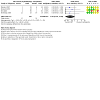
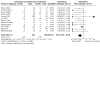

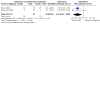
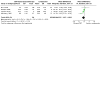

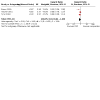

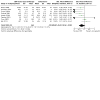


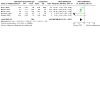


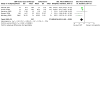

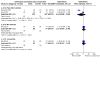
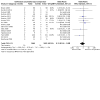
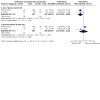

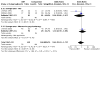

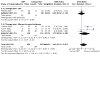
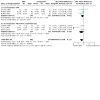
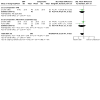
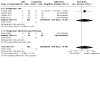
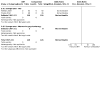
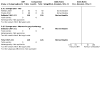



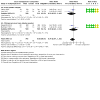

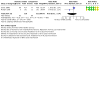


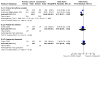
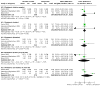

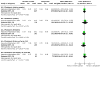



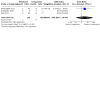

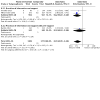

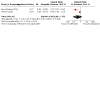
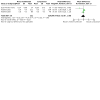
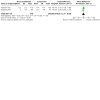

Update of
References
References to studies included in this review
Allard 1992 {published data only}
-
- Allard R, Marshall M, Plante MC. Intensive follow-up does not decrease the risk of repeat suicide attempts. Suicide and Life-Threatening Behavior 1992;22:303-14. - PubMed
Amadéo 2015 {published data only}
-
- Amadéo S, Rereao M, Malogne A, Favro P, Nguyen NL, Milner A, et al. Testing brief intervention and phone contact among subjects with suicidal behavior: a randomized controlled trial in French Polynesia in the frames of the World Health Organization/Suicide Trends in At-Risk Territories study. Mental Illness 2015;7:5818. - PMC - PubMed
-
- De Leo D, Milner A. The WHO/START Study: promoting suicide prevention for a diverse range of cultural contexts. Suicide and Life-Threatening Behavior 2010;40:99-106. - PubMed
Andreoli 2015 {published data only}
-
- Andreoli A, Burnand Y, Cochennec M-F, Ohlendorf P, Frambati L, Gaudry-Maire D. Disapointed love and suicide: a randomized controlled trial of "abandonment psychotherapy" among borderline patients. Journal of Personality Disorders 2015;29:1-17. - PubMed
Armitage 2016 {published data only (unpublished sought but not used)}
-
- Armitage CJ, Rahim WA, Rowe R, O'Connor RC. An exploratory randomised trial of a simple, brief psychological intervention to reduce subsequent suicidal ideation and behaviour in patients admitted to hospital for self-harm. British Journal of Psychiatry 2016;208:470-6. - PubMed
Armitage 2016a {published data only (unpublished sought but not used)}
-
- Armitage CJ, Rahim WA, Rowe R, O'Connor RC. An exploratory randomised trial of a simple, brief psychological intervention to reduce subsequent suicidal ideation and behaviour in patients admitted to hospital for self-harm. British Journal of Psychiatry 2016;208:470-6. - PubMed
Armitage 2016b {published data only (unpublished sought but not used)}
-
- Armitage CJ, Rahim WA, Rowe R, O'Connor RC. An exploratory randomised trial of a simple, brief psychological intervention to reduce subsequent suicidal ideation and behaviour in patients admitted to hospital for self-harm. British Journal of Psychiatry 2016;208:470-6. - PubMed
Bateman 2009 {published and unpublished data}ISRCTN27660668
-
- Bateman A, Fonagy P. Randomized controlled trial of outpatient mentalization-based treatment versus structured clinical management for borderline personality disorder. American Journal of Psychiatry 2009;166:1355-64. - PubMed
Beautrais 2010 {published and unpublished data}
-
- Beautrais AL, Gibb SJ, Faulkner A, Fergusson DM, Mulder RT. Postcard intervention for repeat self-harm: randomised controlled trial. British Journal of Psychiatry 2010;197:55-60. - PubMed
Bennewith 2002 {published data only}
Brown 2005 {published data only}
-
- Brown GK, Ten Have T, Henriques GR, Xie SX, Hollander JE, Beck AT. Cognitive therapy for the prevention of suicide attempts: a randomized controlled trial. Journal of the American Medical Association 2005;294:563-70. - PubMed
-
- Ghahramanlou-Holloway M, Bhar SS, Brown GK, Olsen C, Beck AT. Changes in problem-solving appraisal after cognitive therapy for the prevention of suicide. Psychological Medicine 2012;42:1185-93. - PubMed
Carter 2005 {published and unpublished data}
-
- Carter GL, Clover K, Whyte IM, Dawson AH, D’este C. Postcards from the EDge: 24-month outcomes of a randomised controlled trial for hospital-treatment self-poisoning. British Journal of Psychiatry 2007;191:548-53. - PubMed
Cedereke 2002 {published data only}
-
- Cedereke M, Monti K, Ojehagen A. Telephone contact with patients in the year after a suicide attempt: does it affect treatment attendance and outcome? A randomised controlled study. European Psychiatry 2002;17:82-91. - PubMed
Clarke 2002 {published data only}
-
- Clarke T, Baker P, Watts CJ, Williams K, Feldman RA, Sherr L. Self-harm in adults: a randomised controlled trial of nurse-led case management versus routine care only. Journal of Mental Health 2002;11:167-76.
Crawford 2010 {published and unpublished data}
-
- Crawford MJ, Csipke E, Brown A, Reid S, Nilsen K, Redhead J, et al. The effect of referral for brief intervention for alcohol misuse on repetition of deliberate self-harm: an exploratory randomized controlled trial. Psychological Medicine 2010;40:1821-8. - PubMed
Davidson 2014 {published and unpublished data}
Dubois 1999 {published data only}
-
- Dubois L, Walter M, Bleton L, Genest P, Lemonnier E, Lachevre G. Evaluation of a comparative and prospective protocol for suicidal youth: analysis of psychiatric diagnosis, therapeutic compliance and rate of recurrence over one year (preliminary results) [Evaluation comparative et prospective d’un protocole de prise en charge specifique de jeunes suicidants: analyse du diagnostic psychiatrique initial, de l’observance therapeutique et du taux de recidive a un an (resultats preliminaires)]. Annales Médico-Psychologiques 1999;157:557-61.
Evans 1999a {published data only}
-
- Evans J, Evans M, Morgan HG, Hayward A, Gunnell, D. Crisis card following self-harm: 12-month follow-up of a randomised controlled trial. British Journal of Psychiatry 2005;187:186-7. - PubMed
-
- Evans MO, Morgan HG, Hayward A, Gunnell DJ. Crisis telephone consultation for deliberate self-harm patients: effects on repetition. British Journal of Psychiatry 1999;175:23-7. - PubMed
Evans 1999b {published data only}
-
- Evans K, Tyrer P, Catalan J, Schmidt U, Davidson K, Dent J, et al. Manual-assisted cognitive-behaviour therapy (MACT): a randomized controlled trial of a brief intervention with bibliotherapy in the treatment of recurrent deliberate self-harm. Psychological Medicine 1999;29:19-25. - PubMed
Fleischmann 2008 {published and unpublished data}
-
- Bertolote JM, Fleischmann A, De Leo D, Phillips MR, Botega NJ, Vijayakumar L, et al. Repetition of suicide attempts: data from five culturally different low- and middle-income country emergency care settings participating in the WHO SUPRE-MISS study. Crisis 2010;31:194-201. - PubMed
-
- Da Silva Cais CF, Stefanello S, Fabricio M, Marisa L, Vaz Scavacini de Freitas G, Botega NJ. Factors associated with repeated suicide attempts: preliminary results of the WHO Multisite Intervention Study on Suicidal Behavior (SUPRE-MISS) from Capinas, Brazil. Crisis 2009;30:73-8. - PubMed
-
- Fleischmann A, Bertolote JM. Multisite Intervention Study on Suicidal Behaviours - SUPRE-MISS: protocol of SUPRE-MISS. citeseerx.ist.psu.edu/viewdoc/download?doi=10.1.1.174.5140&rep=rep1&... (accessed 31 October 2020).
-
- Hassanzadeh M, Khajeddin N, Nojomi M, Fleischmann A, Eshrati T. Brief intervention and contact after deliberate self-harm: an Iranian randomised controlled trial. Iranian Journal of Psychiatry and Behavioral Sciences 2010;4:5-12.
Gibbons 1978 {published data only}
-
- Gibbons JS, Butler J, Urwin P, Gibbons JL. Evaluation of a social work service for self-poisoning patients. British Journal of Psychiatry 1978;133:111-8. - PubMed
Gratz 2006 {published and unpublished data}
-
- Gratz KL, Gunderson JG. Preliminary data on an acceptance-based emotion regulation group intervention for deliberate self-harm among women with borderline personality disorder. Behavior Therapy 2006;37:25-35. - PubMed
Gratz 2014 {published and unpublished data}
-
- Gratz KL, Tull MT, Levy R. Randomized controlled trial and uncontrolled 9-month follow-up of an adjunctive emotion regulation group therapy for deliberate self-harm among women with borderline personality disorder. Psychological Medicine 2013;44:2099-122. - PubMed
Grimholt 2015 {published data only}
Guthrie 2001 {published data only}
Gysin‐Maillart 2016 {published data only}
-
- Gysin-Maillart A, Soravia L, Schwab S. Attempted suicide short intervention program influences coping among patients with a history of attempted suicide. Journal of Affective Disorders 2020;264:393-9. - PubMed
-
- Park A-L, Gysin-Maillart A, Müller TJ, Exadaktylos A, Michel K. Cost-effectiveness of a brief structured intervention program aimed at preventing repeat suicide attempts among those who previously attempted suicide: a secondary analysis of the ASSIP randomized clinical trial. JAMA Open 2018;1:e183680. - PMC - PubMed
-
- Ring M, Gysin-Maillart A. Patients' satisfaction with the therapeutic relationship and therapeutic outcome is related to suicidal ideation in the Attempted Suicide Short Intervention Program (ASSIP). Crisis 2020;41(5):337-43. - PubMed
Harned 2014 {published and unpublished data}
-
- Harned MS, Korslund KE, Linehan MM. A pilot randomized controlled trial of dialectical behavior therapy with and without the dialectical behavior therapy prolonged exposure protocol for suicidal and self-injuring women with borderline personality disorder and PTSD. Behaviour Research and Therapy 2014;55:7-17. - PMC - PubMed
Hassanian‐Moghaddam 2011 {published and unpublished data}
-
- Hassanian-Moghaddam H, Sarjami S, Kolahi A-A, Carter GL. Postcards in Persia: randomised controlled trial to reduce suicidal behaviours 12 months after hospital-treated self-poisoning. British Journal of Psychiatry 2011;198:309-16. - PubMed
-
- Hassanian-Moghaddam H, Sarjami S, Kolahi A-A, Lewin T, Carter G. Postcards in Persia: a twelve to twenty-four month follow-up of a randomized controlled trial for hospital-treated deliberate self-poisoning. Archives of Suicide Research 2017;21:138-54. - PubMed
Hatcher 2011 {published and unpublished data}
-
- Hatcher S, Sharon C, Parag V, Collins N. Problem-solving therapy for people who present to hospital with self-harm: Zelen randomised controlled trial. British Journal of Psychiatry 2011;199:310-6. - PubMed
Hatcher 2015 {published and unpublished data}
-
- Hatcher S, Sharon C, House A, Collins N, Collings S, Pillai A. The ACCESS study: Zelen randomised controlled after self-harm. British Journal of Psychiatry 2015;206:229-36. - PubMed
Hatcher 2016 {published and unpublished data}
-
- Hatcher S, Coupe N, Wikiriwhi K, Durie M, Pillai A. Te Ira Tangata: a Zelen randomised controlled trial of a culturally informed treatment compared to treatment as usual in Māori who present to hospital after self-harm. Social Psychiatry and Psychiatric Epidemiology 2016;51:885-94. - PubMed
Hawton 1981 {published and unpublished data}
-
- Hawton K, Bancroft J, Catalan J, Kingston B, Stedeford A. Domiciliary and out-patient treatment of self-poisoning patients by medical and non-medical staff. Psychological Medicine 1981;11:169-77. - PubMed
Hawton 1987 {published and unpublished data}
-
- Hawton K, McKeown S, Day A, Martin P, O’Connor M, Yule J. Evaluation of out-patient counselling compared with general practitioner care following overdoses. Psychological Medicine 1987;17:751-61. - PubMed
Husain 2014 {published and unpublished data}
-
- Husain N, Afsar S, Ara J, Fayyaz H, Ur Rahman R, Tomenson B, et al. Brief psychological intervention after self-harm: randomised controlled trial from Pakistan. British Journal of Psychiatry 2014;204:462-70. - PubMed
Hvid 2011 {published and unpublished data}
-
- Hvid M, Vangborg K, Sørensen HJ, Nielsen IK, Stenborg JM, Wang AG. Preventing repetition of attempted suicide- II: the Amager Project, a randomized controlled trial. Nordic Journal of Psychiatry 2011;65:292-8. - PubMed
Kapur 2013 {published and unpublished data}
-
- Kapur N, Gunnell D, Hawton K, Nadeem S, Khalil S, Longson D, et al. Messages from Manchester: pilot randomised controlled trial following self-harm. British Journal of Psychiatry 2013;203:73-4. - PubMed
Kawanishi 2014 {published and unpublished data}
-
- Furuno T, Nakagawa M, Hinto K, Tamada T, Kawashima Y, Matsuoka Y, et al. Effectiveness of assertive case management on repeat self-harm in patients admitted for suicide attempt: findings from ACTION-J study. Journal of Affective Disorders 2018;225:460-5. - PubMed
-
- Kawanishi C, Aruga T, Ishizuka N, Yonemoto N, Otsuka K, Kamijo Y, et al. Assertive case management versus enhanced usual care for people with mental health problems who had attempted suicide and were admitted to hospital emergency departments in Japan (ACTIONJ): a multicentre, randomised controlled trial. Lancet Psychiatry 2014;1:193-201. - PubMed
Liberman 1981 {published data only}
-
- Liberman RP, Eckman T. Behavior therapy vs insight-oriented therapy for repeated suicide attempters. Archives of General Psychiatry 1981;38:1126-30. - PubMed
Lin 2020 {published data only (unpublished sought but not used)}
-
- Lin Y-C, Liu S-I, Chen S-C, Sun F-J, Huang H-C, Huang C-R, et al. Brief cognitive-based psychosocial intervention and case management for suicide attempters discharged from the emergency department in Taipei, Taiwan: a randomized controlled study. Suicide and Life-Threatening Behavior 2020;50:688-705. - PubMed
Linehan 1991 {published data only}
-
- Linehan MM, Armstrong HE, Suarez A, Allmon D, Heard HL. Cognitive-behavioral treatment of chronically parasuicidal borderline patients. Archives of General Psychiatry 1991;48:1060-4. - PubMed
-
- Linehan MM, Heard HL, Armstrong HE. Naturalistic follow-up of a behavioral treatment for chronically parasuicidal borderline patients. Archives of GeneralPsychiatry 1993;50:971-4. - PubMed
Linehan 2006 {published and unpublished data}
-
- Bedics JD, Atkins DC, Comtois JA, Linehan MM. Treatment differences in the therapeutic relationship and introject during a 2-year randomized controlled trial of dialectical behavior therapy versus non-behavioral psychotherapy experts for borderline personality disorder. Journal of Consulting and Clinical Psychology 2012;80:66-77. - PMC - PubMed
-
- Bedics JD, Atkins DC, Harned MS, Linehan MM. The therapeutic alliance as a predictor of outcome in dialectical behavior therapy versus nonbehavioral psychotherapy by experts for borderline personality disorder. Psychotherapy: Theory, Research and Practice 2015;52:67-77. - PubMed
-
- Coyle TN, Shaver JA, Linehan MM. On the potential for iatrogenic effects of psychiatric crisis services: the example of dialectical behavior therapy for adult women with borderline personality disorder. Journal of Consulting and Clinical Psychology 2018;86:116-24. - PubMed
-
- Harned MS, Chapman AL, Dexter-Mazza ET, Murray A, Comtois KA, Linehan MM. Treating co-occurring axis I disorders in recurrently suicidal women with borderline personality disorder: a 2-year randomized trial of dialectical behavior therapy versus community treatment by experts. Journal of Consulting and Clinical Psychology 2008;76:1068-75. - PubMed
-
- Harned MS, Chapman AL, Dexter-Mazza ET, Murray A, Comtois KA, Linehan MM. Treating co-occurring axis I disorders in recurrently suicidal women with borderline personality disorder: a 2-year randomized trial of dialectical behavior therapy versus community treatment by experts. Personality Disorders: Theory, Research and Treatment 2009;5:35-45. - PubMed
Linehan 2015 {published data only}
-
- Linehan MM, Korslund KE, Harned MS, Gallop RJ, Lungu A, Neacsiu AD, et al. Dialectical behavior therapy for high suicide risk in individuals with borderline personality disorder: a randomized clinical trial and component analysis. JAMA Psychiatry 2015;72:475-82. - PubMed
Linehan 2015a {published data only}
-
- Linehan MM, Korslund KE, Harned MS, Gallop RJ, Lungu A, Neacsiu AD, et al. Dialectical behavior therapy for high suicide risk in individuals with borderline personality disorder: a randomized clinical trial and component analysis. JAMA Psychiatry 2015;72:475-82. - PubMed
Linehan 2015b {published data only}
-
- Linehan MM, Korslund KE, Harned MS, Gallop RJ, Lungu A, Neacsiu AD, et al. Dialectical behavior therapy for high suicide risk in individuals with borderline personality disorder: a randomized clinical trial and component analysis. JAMA Psychiatry 2015;72:475-82. - PubMed
Marasinghe 2012 {published and unpublished data}
-
- Marasinghe RB, Edirippulige S, Kavanagh D, Smith A, Jiffry MTM. Effect of mobile phone-based psychotherapy in suicide prevention: a randomized controlled trial in Sri Lanka. Journal of Telemedicine and Telecare 2012;18:151-5. - PubMed
-
- Marasinghe RB. Evaluation of a Brief Inpatient and Community Intervention to Address Suicide Risk in Sri Lanka Using Mobile Phones [PhD thesis]. Brisbane, QLD: The University of Queensland, School of Medicine, 2012.
McAuliffe 2014 {published and unpublished data}
-
- McAuliffe C, McLeavey BC, Fitzgerald T, Corcoran P, Carroll B, Ryan L, et al. Group problem-solving skills training for self-harm: randomised controlled trial. British Journal of Psychiatry 2014;204:383-90. - PubMed
McLeavey 1994 {published data only}
-
- McLeavey B, Daly R, Ludgate J, Murray C. Interpersonal problem-solving skills training in the treatment of self-poisoning patients. Suicide and Life-Threatening Behavior 1994;24:382-94. - PubMed
McMain 2009 {published and unpublished data}
-
- Boritz T, Barnhart R, McMain SF. The influence of posttraumatic stress disorder on treatment outcomes of patients with borderline personality disorder. Journal of Personality Disorders 2016;30:395-407. - PubMed
-
- Case BG. Dialectical behavior therapy versus general psychiatric management in the treatment of borderline personality disorder. American Journal of Psychiatry 2010;167:475. - PubMed
-
- McMain SF, Fitzpatrick S, Boritz T, Barnhart R, Links P, Streiner DL. Outcome trajectories and prognostic factors for suicide and self-harm behaviors in patients with borderline personality disorder following one year of outpatient psychotherapy. Journal of Personality Disorders 2018;32:497-512. - PubMed
-
- McMain SF, Guimond T, Streiner DL, Cardish RJ, Links PS. Dialectical behavior therapy compared with general psychiatric management for borderline personality disorder: clinical outcomes and functioning over a 2-year follow-up. American Journal of Psychiatry 2012;169:650-61. - PubMed
-
- McMain SF, Links PS, Gnam WH, Guimond T, Cardish RJ, Korman L, et al. A randomized trial of dialectical behavior therapy versus general psychiatric management for borderline personality disorder. American Journal of Psychiatry 2009;166:1365-74. - PubMed
McMain 2017 {published data only}
-
- Krantz LH, McMain S, Kuo JR. The unique contribution of acceptance without judgment in predicting nonsuicidal self-injury after 20-weeks of dialectical behaviour therapy group skills training. Behaviour Research and Therapy 2018;104:44-50. - PubMed
-
- McMain SF, Guimond T, Barnhart R, Habinski L, Streiner DL. A randomized trial of brief dialectical behaviour therapy skills training in suicide patients suffering from borderline disorder. Acta Psychiatrica Scandinavica 2017;135:138-48. - PubMed
-
- Stratton N, Mendoza Alvarez M, Labrish C, Barnhart R, McMain S. Predictors of dropout from a 20-week dialectical behavior therapy skills group for suicidal behaviors and borderline personality disorder. Journal of Personality Disorders 2018;32:391-406. - PubMed
Morgan 1993 {published data only}
-
- Morgan HG, Jones EM, Owen JH. Secondary prevention of non-fatal deliberate self-harm. The green card study. British Journal of Psychiatry 1993;163:111-2. - PubMed
Morthorst 2012 {published data only}
Mouaffak 2015 {published data only}
-
- Mouaffak F, Marchand A, Castaigne E, Arnoux A, Hardy P. OSTA program: a French follow up intervention program for suicide prevention. Psychiatry Research 2015;230:913-8. - PubMed
Mousavi 2015 {published data only}
Mousavi 2017 {published data only}
Naidoo 2014 {published data only}
-
- Naidoo SS, Gathiram P, Schlebusch L. Effectiveness of a buddy intervention support programme for suicidal behaviour in a primary care setting. South African Family Practice 2014;56:263-70.
O'Connor 2015 {published data only}
O'Connor 2017 {published data only}ISRCTN99488269
O'Connor 2020 {published data only}
-
- O'Connor SS, McClay MM, Choudhry S, Shields AD, Carlson R, Alonso Y. Pilot randomized clinical trial of the teachable moment brief intervention for hospitalized suicide attempt survivors. General Hospital Psychiatry 2020;63:111-8. - PubMed
Owens 2020 {published data only}ISRCTN54036115
Patsiokas 1985 {published data only}
-
- Patsiokas AT, Clum GA. Effects of psychotherapeutic strategies in the treatment of suicide attempters. Psychotherapy: Theory, Research and Practice 1985;22:281-90.
Priebe 2012 {published and unpublished data}
-
- Priebe S, Bhatti N, Barnicot K, Bremner S, Gaglia A, Katsakou C, et al. Effectiveness and cost-effectiveness of dialectical behaviour therapy for self-harming patients with personality disorder: a pragmatic randomised controlled trial. Psychotherapy and Psychosomatic 2012;81:356-65. - PubMed
Sahin 2018 {published data only}
-
- Sahin Z, Vinnars B, Gorman BS, Wilczek A, Åsberg M, Barber JP. Clinical severity as a moderator of outcome in psychodynamic and dialectical behavior therapies for borderline personality disorder. Personality Disorders 2018;9:437-46. - PubMed
Salkovskis 1990 {published data only}
-
- Salkovskis PM, Atha C, Storer D. Cognitive-behavioural problem solving in the treatment of patients who repeatedly attempt suicide. A controlled trial. British Journal of Psychiatry 1990;157:871–6. - PubMed
Slee 2008 {published and unpublished data}
-
- Slee N, Garnefski N, Van der Leeden R, Arensman E, Spinhoven P. Cognitive-behavioural intervention for self-harm: randomised controlled trial. British Journal of Psychiatry 2008;192:202-11. - PubMed
Sreedaran 2020 {published data only}
Stewart 2009 {published and unpublished data}
-
- Stewart CD, Quinn A, Plever S, Emmerson B. Comparing cognitive behavior therapy, problem solving therapy, and treatment as usual in a high risk population. Suicide and Life-Threatening Behavior 2009;39:538-47. - PubMed
Tapolaa 2010 {published and unpublished data}
-
- Tapolaa V, Lappalainen R, Wahlström J. Brief intervention for deliberate self-harm: an exploratory study. Suicidology Online 2010;1:95-108.
Torhorst 1987 {published data only}
-
- Torhorst A, Möller HJ, Bürk F, Kurz A, Wächtler C, Lauter H. The psychiatric management of parasuicide patients: a controlled clinical study comparing different strategies of outpatient treatment. Crisis 1987;8:53-61. - PubMed
Torhorst 1988 {published data only}
-
- Torhorst A, Möller HJ, Kurz A, Schmid-Bode W, Lauter H. Comparing a 3-month and a 12-month-outpatient aftercare program for parasuicide repeaters. In: Möller HJ, Schmidtke A, Welz R, editors(s). Current Issues of Suicidology. Berlin, Germany: Springer-Verlag, 1988:419–24.
Turner 2000 {published data only}
-
- Turner RM. Naturalistic evaluation of dialectical behavior therapy-oriented treatment for borderline personality disorder. Cognitive and Behavioral Practice 2000;7:413-9.
Tyrer 2003 {published data only}
-
- Tyrer P, Thompson S, Schmidt U, Jones V, Knapp M, Davidson K, et al. Randomized controlled trial of brief cognitive behaviour therapy versus treatment as usual in recurrent deliberate self-harm: the POPMACT study. Psychological Medicine 2003;33:969-76. - PubMed
Vaiva 2006 {published data only}
Vaiva 2018 {published data only}
-
- Demesmaeker A, Benard V, Leroy A, Vaiva G. Impacts of a brief contact intervention in suicide prevention on medical care consumptions [Impacts d'un système de veille en prévention du suicide sur les consommations de soins]. L'Encéphale 2019;45:S27-31. - PubMed
-
- Vaiva G, Berrouiguet S, Walter M, Courtet P, Ducrocq F, Jardon V, et al. Combining postcards, crisis cards, and telephone contact into a decision-making algorithm to reduce suicide reattempt: a randomized clinical trial of a personalized brief contact intervention. Journal of Clinical Psychiatry 2018;79:17m11631. - PubMed
Van der Sande 1997 {published data only}
-
- Van der Sande R, Buskens E, Van der Graaf Y, Van Rooijen E, Allart E, Van Engeland H. No measurable effect from general socio-psychiatric care for those attempting suicide: a randomized experiment [Geen meetbaar effect van algemene sociaal–psychiatrische nazorg voor suicidepogers; een gerandomiseerd experiment]. Nederlands Tijdschriftvoor de Geneeskunde 1998;142:2356.
-
- Van der Sande R, Van Rooijen L, Buskens E, Allart E, Hawton K, Van der Graaf Y, et al. Intensive in-patient and community intervention versus routine care after attempted suicide. A randomised controlled intervention study. British Journal of Psychiatry 1997;171:35-41. - PubMed
Van Heeringen 1995 {published data only}
-
- Van Heeringen C, Jannes S, Buylaert W, Hendrick H, De Bacquer D, Van Remoortel J. The management of noncompliance with referral to out-patient after-care among attempted suicide patients: a controlled intervention study. Psychological Medicine 1995;25:963-70. - PubMed
Walton 2020 {published and unpublished data}
-
- Walton CJ, Bendit N, Baker AL, Carter GL, Lewin TJ. A randomised trial of dialectical behaviour therapy and the conversational model for the treatment of borderline personality disorder with recent suicidal and/or non-suicidal self-injury: an effectiveness study in an Australian public mental health service. Australian and New Zealand Journal of Psychiatry 2020;54:1020-34. - PubMed
Wang 2016 {published data only}
-
- Wang Y-C, Hsieh L-Y, Wang M-Y, Chou C-H, Huang M-W, Ko H-C. Coping card usage can further reduce suicide reattempt in suicide attempter case management within 3-month intervention. Suicide and Life-Threatening Behavior 2016;46:106-20. - PubMed
Waterhouse 1990 {published data only}
-
- Waterhouse J, Platt S. General hospital admission in the management of parasuicide. A randomised controlled trial. British Journal of Psychiatry 1990;156:236–42. - PubMed
Wei 2013 {published data only}
-
- Wei S, Liu L, Bi B, Li H, Hou J, Tan S, et al. An intervention and follow-up study following a suicide attempt in the emergency departments of four general hospitals in Shenyang, China. Crisis 2013;34:107-15. - PubMed
Weinberg 2006 {published data only}
-
- Weinberg I, Gunderson JG, Hennen J, Cutter CJ. Manual assisted cognitive treatment for deliberate self-harm in borderline personality disorder patients. Journal of Personality Disorders 2006;20:482-92. - PubMed
Welu 1977 {published data only}
-
- Welu T. A follow-up program for suicide attempters: evaluation of effectiveness. Suicide and Life-Threatening Behavior 1977;7:17-30. - PubMed
References to studies excluded from this review
Agyapong 2016 {published data only}
-
- Agyapong V, Behre T, Juhas M, Greenshaw A. Preventing self-harm and reducing suicidal ideation through an expediated regular supportive psychotherapy and assertive case management - protocol for a three-armed partial randomised controlled trial. European Psychiatry 2016;33S:S440.
Ahmed 2016 {published data only}ISRCTN76914248
-
- Ahmed N, John A, Islam S, Jones R, Anderson P, Davies C, et al. Investigating the feasibility of an enhanced contact intervention in self-harm and suicidal behaviour: a protocol for a randomised controlled trial delivering a Social support and Wellbeing Intervention following Self-Harm (SWISH). British Medical Journal Open 2016;6:e012043. - PMC - PubMed
Albuixech‐García 2020 {published data only}
-
- Albuixech-García R, Juliá-Sanchis R, Molina MAF, Escribano S. Impact of the mental health care continuity-chain among individuals expressing suicidal behaviour in a Spanish sample. Issues in Mental Health Nursing 2020;41:602-7. - PubMed
Andover 2015 {published data only}
Andover 2017 {published data only}
Andreasson 2016 {published data only}
-
- Andreasson K, Krough J, Rosenbaum B, Gluud C, Jobes DA, Nordentoft M. The DiaS trial: Dialectical behavior therapy versus collaborative assessment and management of Suicidality on self-harm in patients with a recent suicide attempt and borderline personality disorder traits - study protocol for a randomized controlled trial. Trials 2014;15:194. - PMC - PubMed
-
- Andreasson K, Krough J, Wenneberg C, Jessen HKL, Krakauer K, Gluud C, et al. Effectiveness of dialectical behavior therapy versus collaborative assessment and management of suicidality treatment for reduction of self-harm in adults with borderline personality traits and disorder - randomized observer-blinded clinical trial. Depression and Anxiety 2016;33:520-30. - PubMed
Andreoli 2019 {published data only}
-
- Andreoli A, Burnand Y, Frambati L, Manning D, Frances A. Abandonment psychotherapy and psychosocial functioning among suicidal patients with borderline personality disorder: a 3-year naturalistic follow-up. Journal of Personality Disorders 2019;33:423-36. - PubMed
Barnes 2018 {published data only}
Barnhofer 2015 {published data only}ISRCTN97185214
-
- Barnhofer T, Crane C, Brennan K, Duggan DS, Crane RS, Eames C, et al. Mindfulness-based cognitive therapy (MBCT) reduces the association between depressive symptoms and suicidal cognitions in patients with a history of suicidal depression. Journal of Consulting and Clinical Psychology 2015;83:1013-20. - PMC - PubMed
Bateman 2020 {published data only}
-
- Bateman A, Constantinou MP, Fonagy P, Holzer S. Eight-year prospective follow-up of mentalization-based treatment versus structured clinical management for people with borderline personality disorder. Personality Disorders: Theory, Research, and Treatment 2020 Jun 25 [EPub ahead of print]. [DOI: 10.1037/per0000422] - DOI - PubMed
Bentley 2017 {published data only}
-
- Bentley KH, Sauer-Zavala S, Cassiello-Robbins CF, Conklin LR, Vento S, Homer D. Treating suicidal thoughts and behaviors within an emotional disorders framework: acceptability and feasibility of the unified protocol in an inpatient setting. Behavior Modification 2017;41:529-57. - PubMed
Berrouiguet 2019 {published data only}
Betz 2020 {published and unpublished data}
Bryan 2017a {published data only (unpublished sought but not used)}
-
- Bryan CJ, May AM, Rozek DC, Williams SR, Clemans TA, Mintz J, et al. Use of crisis management interventions among suicidal patients: results of a randomized controlled trial. Depression and Anxiety 2018;35:619-28. - PubMed
Bryan 2017b {published data only}
-
- Bryan CJ, Mintz J, Clemans TA, Leeson B, Burch S, Williams SR, et al. Effect of crisis response planning vs. contracts for safety on suicide risk in U.S. army soldiers: a randomized clinical trial. Journal of Affective Disorders 2017;212:64-72. - PubMed
Cebria 2015 {published data only}
-
- Cebrià AI, Pérez-Bonaventura I, Cuijpers P, Kerkhof A, Parra I, Escayola A, et al. Telephone management program for patients discharged from an emergency department after a suicide attempt: a 5-year follow-up study in a Spanish population. Crisis 2015;36(5):345-52. - PubMed
-
- Cebrià AI, Parra I, Pàmias M, Escayola A, García-Parés G, Puntí J, et al. Effectiveness of a telephone management programme for patients discharged from an emergency department after a suicide attempt: controlled study in a Spanish population. Journal of Affective Disorders 2013;147:269-76. - PubMed
Celano 2017 {published and unpublished data}
Currier 2015 {published data only}
-
- Currier GW, Brown GK, Brenner LA, Chesin M, Knox KL, Ghahramanlou-Holloway M, et al. Rationale and study protocol for a two-part intervention: safety planning and structured follow-up among veterans at risk for suicide and discharged from the emergency department. Contemporary Clinical Trials 2015;43:179-84. - PubMed
Dassa 2018 {published data only (unpublished sought but not used)}
-
- Dassa D, Olie E, Courtet P, Ducasse D. Positive psychology for management of suicidal patients: a controlled trial. European Psychiatry 2018;48S:S446.
Davidson 2006 {published and unpublished data}
-
- Davidson K, Norrie J, Tyrer P, Gumley A, Tata P, Murray H, et al. The effectiveness of cognitive behavior therapy for borderline personality disorder: results from the borderline personality disorder study of cognitive therapy (BOSCOT) trial. Journal of Personality Disorders 2006;20:450-65. - PMC - PubMed
-
- Davidson KM, Tyrer P, Norrie J, Palmer SJ, Tyrer H. Cognitive therapy v. usual treatment for borderline personality disorder: prospective 6-year follow-up. British Journal of Psychiatry 2010;197:456-62. - PubMed
-
- Norrie J, Davidson K, Tata P, Gumley A. Influence of therapist competence and quantity of cognitive behavioural therapy on suicidal behaviour and inpatient hospitalisation in a randomised controlled trial in borderline personality disorder: further analyses of treatment effects in the BOSCOT study. Psychology and Psychotherapy: Theory, Research and Practice 2013;86:280-93. - PMC - PubMed
Dimeff 2020 {published data only}
-
- Dimeff LA, Jobes DA, Chalker SA, Piehl BM, Duvivier LL, Lok BC, et al. A novel engagement of suicidality in the emergency department: Virtual Collaborative Assessment and Management of Suicidality. General Hospital Psychiatry 2020;63:119-26. - PubMed
Di Simplicio 2020 {published data only}
Dixon‐Gordon 2015 {published data only}
-
- Dixon KL, Chapman AL, Turner BJ. A preliminary pilot study comparing dialectical behavior therapy emotion regulation skills with interpersonal effectiveness skills and a control group treatment. Journal of Experimental Psychopathology 2015;6:369-88.
Doering 2010 {published data only}
-
- Buchheim A, Hörz-Sagstetter S, Doering S, Rentrop M, Schuster P, Buchheim P, et al. Change of unresolved attachment in borderline personality disorder: RCT study of transference-focused psychotherapy. Psychotherapy and Psychosomatics 2017;86:314-6. - PubMed
-
- Doering S, Hörz S, Rentrop M, Fischer-Kern M, Schuster P, Benecke C, et al. Transference-focused psychotherapy v. treatment by community psychotherapists for borderline personality disorder: randomised controlled trial. British Journal of Psychiatry 2010;196:389-95. - PubMed
Ducasse 2018 {published data only (unpublished sought but not used)}
-
- Ducasse D, Jaussent I, Arpon-Brand V, Vienot M, Laglaoui C, Béziat S, et al. Acceptance and commitment therapy for the management of suicidal patients: a randomized controlled trial. Psychotherapy and Psychosomatics 2018;87:1-12. - PubMed
Exbrayat 2017 {published data only}
Franklin 2016 {published data only}
-
- Franklin JC, Fox KR, Franklin CR, Kleiman EM, Ribeiro JD, Jaroszewski AC, et al. A brief mobile app reduces nonsuicidal and suicidal self-injury: evidence from three randomized controlled trials. Journal of Consulting and Clinical Psychology 2016;84:544-57. - PubMed
Gabilondo 2020 {published data only}
-
- Gabilondo A, Aristegi E, Gonzalez-Pinto A, Zurimendi JM, Mateos del Pinto M, Roca R, et al. Prevention of suicidal behaviour with telemedicine in patients with a recent suicide attempt: is a 6-month intervention long enough? Suicide and Life-Threatening Behavior 2020;50:211-9. - PubMed
Galfalvy 2017 {published data only (unpublished sought but not used)}
-
- Galfalvy H, Brodsky B, Oquendo M, Stanley B. Childhood maltreatment moderates antidepressant treatment response for self-injury in borderline personality disorder. Biological Psychiatry 2017;81:S74.
Gooding 2020 {published data only}ISRCTN17776666
Goodman 2016 {published data only (unpublished sought but not used)}
-
- Goodman M, Banthin D, Blair NJ, Mascitelli KA, Wilsnack J, Chen J, et al. A randomized trial of dialectical behavior therapy in high-risk suicidal veterans. Journal of Clinical Psychiatry 2016;77:e1591-600. - PubMed
Goodman 2020 {published data only}
Haddock 2019 {published data only (unpublished sought but not used)}ISRCTN17890126
-
- Haddock G, Davies L, Evans E, Emsley R, Gooding P, Heaney L, et al. Investigating the feasibility and acceptability of a cognitive behavioural suicide prevention therapy for people in acute psychiatric wards (the 'INSITE' trial): study protocol for a randomised controlled trial. Trials 2016;17:79. - PMC - PubMed
Hashemi‐Aliabadi 2020 {published data only}
Hooley 2014 {published data only}
-
- Hooley JM, St Germain SA. Nonsuicidal self-injury, pain, and self-criticism: does changing self-worth change pain endurance in people who engage in self-injury. Clinical Psychological Science 2014;2:297-305.
Hooley 2018 {published data only}ISRCTN12276176
Hurtado‐Santiago 2018 {published data only}
Inder 2015 {published data only}
-
- Inder ML, Crowe MT, Luty SE, Carter JD, Moor S, Frampton CM, et al. Randomized, controlled trial of interpersonal and social rhythm therapy for young people with bipolar disorder. Bipolar Disorder 2015;17:128-38. - PubMed
-
- Inder ML, Crowe MT, Luty SE, Carter JD, Moor S, Frampton CM. Prospective rates of suicide attempts and nonsuicidal self-injury by young people with bipolar disorder participating in a psychotherapy study. Australian and New Zealand Journal of Psychiatry 2015;50:167-73. - PubMed
ISRCTN10115835 {unpublished data only}10115835
-
- ISRCTN10115835. Is a talking therapy, called psychodynamic interpersonal therapy, clinically and cost effective for women who self-harm in prison? [Women Offenders Repeat Self-Harm Intervention Pragmatic Trial (WORSHIP III)]. doi.org/10.1186/ISRCTN10115835 (first received 11 February 2019). [DOI: 10.1186/ISRCTN10115835] - DOI
ISRCTN16003313 {unpublished data only}16003313
-
- ISRCTN16003313. A brief psychological intervention for self-harm in emergency departments [ASsuRED: Improving outcomes in patients who self-harm. Adapting and evaluating a brief pSychological inteRvention in Emergency Departments]. doi.org/10.1186/ISRCTN16003313 (first received 27 January 2020).
ISRCTN16049211 {unpublished data only}16049211
-
- ISRCTN16049211. FReSH START feasibility study [Function REplacement in repeated Self-Harm: Standardising Therapeutic Assessment and the Related Therapy (FRESH START): feasibility study]. doi.org/10.1186/ISRCTN16049211 (first received 9 December 2019).
ISRCTN16862589 {unpublished data only}16862589
-
- ISRCTN16862589. Brief education supported treatment for adolescent borderline personality disorder [Brief Education Supported Treatment (BEST) for adolescent borderline personality disorder: a feasibility study of delivery of specialised early intervention for borderline personality disorder through collaboration with education providers, incorporating a feasibility randomised controlled trial]. doi.org/10.1186/ISRCTN16862589 (first received 28 January 2019).
ISRCTN18761534 {unpublished data only}18761534
-
- ISRCTN18761534. Women Offenders Repeat Self-Harm Intervention Pilot II (WORSHIP II). doi.org/10.1186/ISRCTN18761534 (first received 19 December 2012).
Jardon 2019 {published data only}
-
- Jardon V, Debien C, Duhem S, Morgiève M, Ducrocq F, Vaiva G. An example of post-discharge monitoring after a suicide attempt: VigilanS [Un example de système de veille post-hospitalière des suicidants: VigilanS]. L'Éncéphale 2019;45:S13-21. - PubMed
Jobes 2017 {published data only}
-
- Huh D, Jobes DA, Comtois KA, Kerbrat AH, Chalker SA, Gutierrez PM, et al. The Collaborative Assessment and Management of Suicidality (CAMS) versus Enhanced Care As Usual (E-CAU) with suicidal soldiers: moderator analyses from a randomized controlled trial. Military Psychology 2018;30:495-506.
-
- Jobes DA, Comtois KA, Gutierrez PM, Brenner LA, Huh D, Chalker SA, et al. A randomized controlled trial of the Collaborative Assessment and Management of Suicidality versus Enhanced Care As Usual with suicidal soldiers. Psychiatry 2017;80:339-56. - PubMed
Johnson 2018 {published data only}
-
- Johnson SB, Goodnight BL, Zhang H, Daboin I, Patterson B, Kaslow NJ. Compassion-based mediation in African Americans: self-criticism mediates changes in depression. Suicide and Life-Threatening Behavior 2018;48:160-8. - PubMed
Kawanishi 2018 {published data only}
-
- Kawanishi C, Ishii T, Yonemoto N, Yamada M, Tachikawa H, Kishimoto T, et al. Protocol for a prospective multicentre registry cohort study on suicide attempters given the assertive case management intervention after admission to an emergency department in Japan: Post-ACtion-J Study (PACS). British Medical Journal Open 2018;8:e020517. - PMC - PubMed
Kennedy 2018 {published data only}
Kholodkov 2015 {published data only}
-
- Kholodkov T. Mindfulness-Based Relapse Prevention for Non-Suicidal Self-Injury [Doctor of Philosophy thesis]. Laramie, WY: University of Wyoming, 2015.
Kim 2020 {published data only}
Kline 2016 {published data only}
-
- Kline A, Chesin M, Latorre M, Miller R, St Hill L, Shcherbakov A, et al. Rationale and study design of a trial of mindfulness-based cognitive therapy for preventing suicidal behavior (MBCT-S) in military veterans. Contemporary Clinical Trials 2016;50:245-52. - PubMed
Korczak 2020 {published data only}
LaCroix 2018 {published and unpublished data}
-
- Ghahramanlou-Holloway M, LaCroix JM, Perera KU, Neely L, Grammer G, Weaver J, et al. Inpatient psychiatric care following a suicide-related hospitalization: a pilot trial of post-admission cognitive therapy in a military medical center. General Hospital Psychiatry 2020;63:46-53. - PubMed
-
- LaCroix JM, Perera KU, Neely LL, Grammer G, Weaver J, Ghahramanlou-Holloway M. Pilot trial of post-admission cognitive therapy: inpatient program for suicide prevention. Psychological Services 2018;15:279-88. - PubMed
-
- Neely L, Irwin K, Carreno Ponce JT, Perera K, Grammer G, Ghahramanlou-Holloway M. Post Admission Cognitive Therapy (PACT) for the prevention of suicide in military personnel with histories of trauma: treatment development and case example. Clinical Case Studies 2013;12:457-73.
Lahoz 2016 {published data only}
-
- Lahoz T, Hvid M, Wang AG. Preventing repetition of attempted suicide - III. The Amager Project, 5-year follow-up of a randomized controlled trial. Nordic Journal of Psychiatry 2017;70:547-53. - PubMed
Lin 2019 {published data only}
-
- Lin T-J, Ko H-C, Wu KY-W, Oei TP, Lane H-Y, Chen C-H. The effectiveness of dialectical behavior therapy skills training group vs. cognitive therapy group on reducing depression and suicide attempts for borderline personality disorder in Taiwan. Archives of Suicide Research 2019;23:82-99. - PubMed
Luxton 2014 {published data only}
-
- Luxton DD, Thomas EK, Chipps J, Relova RM, Brown D, McLay R, et al. Caring letters for suicide prevention: implementation of a multi-site randomized clinical trial in the U.S. military and veteran affairs healthcare systems. Contemporary Clinical Trials 2014;37:252-60. - PubMed
Mackie 2017 {published data only}
Marriott 2016 {published data only}
-
- Marriott BP, Hibbeln JR, Killeen TK, Magruder KM, Holes-Lewis K, Tolliver BK, et al. Design and methods for the Better Resiliency Among Veterans and non-Veterans with Omega-3's (BRAVO) study: A double-blind, placebo-controlled trial of omega-3 fatty acid supplementation among adult individuals at risk of suicide. Contemporary Clinical Trials 2016;47:325-33. - PubMed
Matsubara 2019 {published data only}
-
- Matsubara T, Matsuo K, Matsuda A, Ogino Y, Hobara T, Wakabayashi Y, et al. Combining phone and postcard brief contact interventions for preventing suicide reattempts: a quasi-randomized controlled trial. Psychiatry Research 2019;279:395-6. - PubMed
McCall 2019 {published data only}
-
- McCall WV, Ahn E, Benca R, Krystal A, Rosenquist PB, Rumble M, et al. 0960. A preliminary report from the "REST-IT" study: insomnia severity and hypersomnia severity each independently predict the intensity of suicidal ideation. Sleep 2015;38:A339.
McManama O'Brien 2018 {published data only}
-
- McManama O'Brien KH, Sellers CM, Battalen AW, Ryan CA, Maneta EK, Aguinaldo LD, et al. Feasibility, acceptability, and preliminary effects of a brief alcohol intervention for suicidal adolescents in inpatient psychiatric treatment. Journal of Substance Abuse Treatment 2018;94:105-12. - PubMed
Miller 2016 {published data only}
Morley 2014 {published data only}
-
- Morley KC, Sitharthan G, Haber PS, Tucker P, Sitharthan T. The efficacy of an Opportunistic Cognitive Behavioral intervention package (OCB) on substance use and comorbid suicide risk: a multisite randomized controlled trial. Journal of Consulting and Clinical Psychology 2014;82:130-40. - PubMed
Navarro‐Haro 2018 {published and unpublished data}
-
- Navarro-Haro MV, Botella C, Guillen V, Moliner R, Marco H, Jorquera M, et al. Dialectical behavior therapy in the treatment of borderline personality disorder and eating disorders comorbidity: a pilot study in a naturalistic setting. Cognitive Therapy and Research 2018;42:636-49.
NCT00218725 {unpublished data only}
-
- NCT00218725. Cognitive therapy for suicide attempters with drug dependence disorder. clinicaltrials.gov/ct2/show/NCT00218725 (first received 22 September 2005).
NCT00601939 {unpublished data only}
-
- NCT00601939. Group interventions for abused, suicidal black women. clinicaltrials.gov/ct2/show/NCT00601939 (first received 28 January 2008).
NCT00603421 {unpublished data only}
-
- NCT00603421. Effectiveness of a 24 hour phone line on the rate of suicide attempts in borderline patients. clinicaltrials.gov/ct2/show/NCT00603421 (first received 29 January 2008).
NCT00641498 {unpublished data only}
-
- NCT00641498. Effectiveness of standard emergency department psychiatric treatment compared with effectiveness of standard emergency department psychiatric treatment associated with treatment delivery by a suicide prevention center. clinicaltrials.gov/ct2/show/NCT00641498 (first received 24 March 2008).
NCT00980824 {published data only (unpublished sought but not used)}
-
- NCT00980824. ENGAGE - Meeting mental health needs of complex comorbid patients. clinicaltrials.gov/ct2/show/NCT00980824 (first received 21 September 2009).
NCT01359761 {unpublished data only}
-
- NCT01359761. Post Admission Cognitive Therapy (PACT) for the inpatient treatment of military personnel with suicidal behaviors: a multi-site randomized controlled trial. clinicaltrials.gov/ct2/show/NCT01359761 (first received 25 May 2011).
NCT01823120 {unpublished data only}
-
- NCT01823120. Text message intervention to reduce repeat self-harm in patients presenting to the emergency department. clinicaltrials.gov/ct2/show/NCT01823120 (first received 4 April 2013).
NCT01952405 {unpublished data only}
-
- NCT01952405. Efficacy of dialectical behavior therapy in patients with borderline personality disorder: a controlled trial in Taiwan. clinicaltrials.gov/ct2/show/NCT01952405 (first received 30 September 2013).
NCT02227160 {unpublished data only}
-
- NCT02227160. Group interventions for suicidal African Americans. clinicaltrials.gov/ct2/show/NCT02227160 (first received 27 August 2014).
NCT02299440 {unpublished data only}
-
- NCT02299440. Effects of ketamine in the acute phase of suicidal ideation (KETIS). clinicaltrials.gov/ct2/show/NCT02299440 (first received 24 November 2014).
NCT02522143 {unpublished data only}
-
- NCT02522143. College students who self-harm: an intervention study. clinicaltrials.gov/ct2/show/NCT02522143 (first received 13 August 2015).
NCT02742922 {unpublished data only}
-
- NCT02742922. Multicenter RCT to evaluate the clinical and cost-effectiveness of a culturally adapted therapy (C-MAP) in patients with a history of self-harm. clinicaltrials.gov/ct2/show/NCT02742922 (first received 19 April 2016).
NCT03300596 {unpublished data only}
-
- NCT03300596. Suicidal adults with alcohol or drug use problems: a new hospital-based treatment. clinicaltrials.gov/ct2/show/NCT03300596 (first received 3 October 2017).
NCT03376113 {unpublished data only}
-
- NCT03376113. The effect of a brief psychological intervention on reducing self-harm repetition: feasibility study. clinicaltrials.gov/ct2/show/NCT03376113 (first received 18 December 2017).
NCT03489382 {unpublished data only}
-
- NCT03489382. The BEACON Study: protocol for cluster RCT of a service to deliver smartphone-assisted problem-solving therapy compared to usual care in men who present with intentional self-harm to the ED in Ontario (protocol A). clinicaltrials.gov/ct2/show/NCT03489382 (first received 5 April 2018).
NCT03533075 {unpublished data only}
-
- NCT03533075. A pilot effectiveness trial of the Teachable Moment Brief Intervention (TMBI) for veterans hospitalized following a suicide attempt. clinicaltrials.gov/ct2/show/NCT03533075 (first received 22 May 2018).
NCT03600532 {unpublished data only}
-
- NCT03600532. Testing the efficacy of the Teachable Moment Brief Intervention for suicide attempt survivors in an inpatient setting: effects on psychosocial and experimental pain outcomes. clinicaltrials.gov/ct2/show/NCT03600532 (first received 26 July 2018).
NCT03943862 {unpublished data only}
-
- NCT03943862. To Share or not to Share (2Share): group intervention to support disclosure decisions after suicide attempt. clinicaltrials.gov/ct2/show/NCT03943862 (first received 9 May 2019).
O'Toole 2019 {published data only}
-
- O'Toole MS, Arendt MB, Pedersen CM. Testing an app-assisted treatment for suicide prevention in a randomized controlled trial: effect on suicide risk and depression. Behavior Therapy 2019;50:421-9. - PubMed
Pearce 2017 {published data only}
-
- Pearce S, Scott L, Attwood G, Saunders K, Dean M, De Ridder R, et al. Democratic therapeutic community treatment for personality disorder: randomised controlled trial. British Journal of Psychiatry 2017;210:149-56. - PubMed
Pfeiffer 2019 {published data only}
Philips 2018 {published data only}ISRCTN98982683
Pistorello 2020 {published data only}
-
- Pistorello J, Jobes DA, Gallop R, Compton SN, Locey NS, Au JS, et al. A randomized controlled trial of the Collaborative Assessment and Management of Suicidality (CAMS) versus Treatment As Usual (TAU) for suicidal college students. Archives of Suicide Research 2020 [ePub ahead of print]. [DOI: 10.1080/13811118.2020.1749742] - DOI - PMC - PubMed
Pratt 2015 {published data only}
Rees 2015 {published data only}
Rompogren 2018 {published data only}
-
- Rompogren JR. Using Resonance Frequency Breathing to Improve Distress Tolerance in Females who Engage in Non-Suicidal Self-Injury [Doctor of Philosophy thesis]. San Diego, CA: Alliant International University, 2018.
Rudd 2015 {published data only}
-
- Bryan CJ, Peterson AL, Rudd MD. Differential effects of brief CBT versus treatment as usual on posttreatment suicide attempts among groups of suicidal patients. Psychiatric Services 2018;69:703-9. - PubMed
-
- Bryan CJ, Rudd MD, Peterson AL, Young-McCaughan S, Wertenberger EG. The ebb and flow of the wish to live and the wish to die among suicidal military personnel. Journal of Affective Disorders 2016;202:58-66. - PubMed
-
- Bryan CJ, Wood DS, May A, Peterson AL, Wertenberger E, Rudd MD. 2017. Mechanisms of action contributing to reductions in suicide attempts following brief cognitive behavioral therapy for military personnel: a test of the interpersonal-psychological theory of suicide 2017;22:241-53. - PubMed
-
- Rudd MD, Bryan CJ, Wertenberger EG, Peterson AL, Young-McCaughan S, Mintz J, et al. Brief cognitive-behavioral therapy effects on post-treatment suicide attempts in a military sample: results of a randomized clinical trial with 2-year follow-up. American Journal of Psychiatry 2015;172:441-9. - PubMed
Ryberg 2019 {published data only}
-
- Ryberg W, Zahl P-H, Diep LM, Landrø NI, Fosse R. Managing suicidality within specialized care: a randomized controlled trial. Journal of Affective Disorders 2019;249:112-20. - PubMed
Sáiz 2014 {published and unpublished data}
-
- Sáiz PA, Rodriguez-Revulta J, González-Blanco L, Burón P, Al-Halabi S, Garrido M, et al. Study protocol of a prevention of recurrent suicidal behavior program based on case management (PSyMAC). Revista de Psiquiatría y Salud Mental 2014;7:131-8. - PubMed
Santel 2020 {published data only}
-
- Santel M, Beblo T, Neuner F, Berg M, Hennig-Fast K, Jobes DA, et al. Collaborative Assessment and Management of Suicidality (CAMS) compared to Enhanced Treatment As Usual (E-TAU) for suicidal patients in an inpatient setting: study protocol for a randomized controlled trial. BMC Psychiatry 2020;20:183. - PMC - PubMed
Sayal 2019 {published and unpublished data}
-
- Sayal K, Roe J, Atha C, Kaylor-Hughes C, Guo B, Townsend E, et al. Feasibility of a randomised controlled trial of remotely delivered problem-solving cognitive behaviour therapy versus usual care for young people with depression and repeat self-harm: Lessons learnt (e-DASH). BMC Psychiatry 2019;19:42. - PMC - PubMed
Sequeira 2016 {published data only}
-
- Sequeira E, Field C, Wagler A, Avila A. The moderation effect of mental health indicators on the efficacy of three brief alcohol interventions. Alcoholism 2016;40:69A.
Simon 2016 {published data only}
Sinnaeve 2018 {published and unpublished data}
-
- Hakkaart-van Roijen L, Sinnaeve R, Bouwmans C, Van den Bosch L. Cost-effectiveness and cost-utility of short-term inpatient dialectical behavior therapy for chronically parasuicidal BPD (young) adults. Journal of Mental Health Policy and Economics 2015;1:S19.
-
- Sinnaeve R, Van den Bosch LMC, Hakkaart-van Roijen L, Vansteelandt K. Effectiveness of step-down versus outpatient dialectical behaviour therapy for patients with severe levels of borderline personality disorder: a pragmatic randomized controlled trial. Borderline Personality Disorder and Emotion Dysregulation 2018;5:12. - PMC - PubMed
Slesnick 2020 {published data only}
-
- Slesnick N, Zhang J, Feng X, Wu Q, Walsh L, Granello DH. Cognitive therapy for suicide prevention: a randomized pilot with suicidal youth experiencing homelessness. Cognitive Therapy and Research 2020;44:402-11.
Smits 2020 {published data only}
-
- Laurenssen EMP, Smits ML, Bales DL, Feenstra DJ, Eeren HV, Noom MJ, et al. Day hospital mentalization-based treatment versus intensive outpatient mentalization-based treatment for patients with severe borderline personality disorder: protocol of a multicentre randomized clinical trial. BMC Psychiatry 2014;14:301. - PMC - PubMed
-
- Laurenssen EMP, Westra D, Kikkert MJ, Noom MJ, Eeren HV, Van Broekhuyzen AJ, et al. Day hospital mentalization-based treatment (MBT-DH) versus treatment as usual in the treatment of severe borderline personality disorder: protocol or a randomized controlled trial. BMC Psychiatry 2014;14:149. - PMC - PubMed
-
- Smits ML, Feenstra DJ, Bales DL, Blankers M, Dekker JJM, Lucas Z, et al. Day hospital versus intensive outpatient mentalization-based treatment: 3-year follow-up of patients treated for borderline personality disorder in a multicentre randomized clinical trial. Psychological Medicine 2020;216:79-84. - PubMed
-
- Smits ML, Feenstra DJ, Eeren HV, Bales DL, Laurenssen EMP, Blankers M, et al. Day hospital versus intensive out-patient mentalisation-based treatment for borderline personality disorder: multicentre randomised clinical trial. British Journal of Psychiatry 2020;216:79-84. - PubMed
Taha 2015 {published data only}
Tejedor 2011 {published and unpublished data}
-
- Farré A, Portella MJ, De Angel L, Díaz A, De Diego-Adeliño J, Vegué J, et al. Benefits of a secondary prevention program in suicide: a 1-year follow-up experimental study compared with a treatment-as-usual control group. Crisis 2016;37:281-9. - PubMed
-
- Tejedor C, Díaz A, Faus G, Pérez V, Solà I. Results of the prevention program of suicidal behavior: eixample district of Barcelona [Resultados del programa de prevención de la conducta suicida: Distrito de la Dreta de l’Eixample de Barcelona]. Actas Españolas de Psiquiatria 2011;39:280-7. - PubMed
Vaiva 2016 {published data only}
-
- Vaiva G, Jardon V, Ducrocq F, Grandgenèvre P, Debien C, Berrouiguet S, et al. Surveillance is a powerful took to prevent suicidal acts. In: Courtet P, editors(s). Understanding Suicide: From Diagnosis to Personalized Treatment. Cham, Switzerland: Springer International Publishing, 2016:269-79.
Van Spijker 2018 {published data only}
Ward‐Ciesielski 2016 {published data only}
Westling 2019 {published data only}
-
- Liljedahl SI, Helleman M, Daukantaité D, Westrin Å, Westling S. A standardized crisis management model for self-harming and suicidal individuals with three or more diagnostic criteria of borderline personality disorder: the Brief Admission Skåne Randomized Controlled Trial protocol (BASRCT). BMC Psychiatry 2017;17:220. - PMC - PubMed
Wilks 2018 {published data only}
Wittouck 2014 {published data only}
-
- Wittouck C, Van Autreve S, Portzky G, Van Heeringen K. A CBT-based psychoeducational intervention for suicide survivors: a cluster randomized controlled study. Crisis 2014;35:193-201. - PubMed
Yang 2020 {published data only}
-
- Yang X, Liu D, Wang Y, Chen Y, Chen W, Yang C, et al. Effectiveness of Zhong-Yong thinking based dialectical behavior therapy group skills training versus supportive group therapy for lowering suicidal risks in Chinese young adults: a randomized controlled trial with a 6-month follow-up. Brain and Behavior 2020;10:e01621. - PMC - PubMed
References to studies awaiting assessment
NCT00533117 {published data only (unpublished sought but not used)}
-
- NCT00533117. Treating suicidal behavior and self-mutilation in people with borderline personality disorder. clinicaltrials.gov/ct2/show/NCT00533117 (first received 21 September 2007).
NCT00834834 {unpublished data only}
-
- NCT00834834. Comparing treatments for self-injury and suicidal behavior in people with borderline personality disorder. clinicaltrials.gov/ct2/show/NCT00834834 (first received 3 February 2009).
References to ongoing studies
ACTRN12617000529347 {unpublished data only}
-
- ACTRN12617000529347. Will prisoners who self-harm reduce their frequency of self-harming after going through the Dialectical Behaviour Therapy intervention? www.anzctr.org.au/Trial/Registration/TrialReview.aspx?id=372437&isRe... (first received 27 February 2017).
Berrouiguet 2014 {published and unpublished data}
-
- Berrouiguet S, Larsen ME, Mesmeur C, Gravey M, Billot R, Walter M, et al. Toward mHealth brief contact intervention in suicide prevention: case series from the Suicide Intervention Assisted by Messages (SIAM) randomized controlled trial. Journal of Medical Internet Research mHealth and uHealth 2018;6:8. - PMC - PubMed
Chaïb 2020 {published data only (unpublished sought but not used)}
McMain 2018 {published and unpublished data}
-
- McMain SF, Chapman AL, Kuo JR, Guimond T, Streiner DL, Dixon-Gordon KL, et al. The effectiveness of 6 versus 12-months of dialectical behaviour therapy for borderline personality disorder: the Feasibility of A Shorter Treatment and Evaluating Responses (FASTER) trial protocol. BMC Psychiatry 2018;18:230. - PMC - PubMed
NCT02060448 {unpublished data only}
-
- NCT02060448. Exploring two emotion-focused treatment modules in non-suicidal self-injury. clinicaltrials.gov/ct2/show/NCT02060448 (first received 12 february 2014).
NCT02354183 {unpublished data only}
-
- NCT02354183. Commitment and motivation in a brief DBT intervention for self harm. clinicaltrials.gov/ct2/show/NCT02354183 (first received 3 February 2015).
NCT03081078 {unpublished data only}
-
- NCT03081078. Effects of community-based caring contact on post-discharge young adults with self-harm. clinicaltrials.gov/ct2/show/NCT03081078 (first received 15 March 2017).
NCT03185026 {unpublished data only}
-
- NCT03185026. Effectiveness of the first French psychoeducational program for suicidal behavior: a randomized controlled trial. clinicaltrials.gov/ct2/show/NCT03185026 (first received 14 June 2017).
NCT03427190 {unpublished data only}
-
- NCT03427190. Assessment of preventive efficacy of an algorithm taking place after suicide attempts among attempters admitted to hospital in the French Overseas Territories. clinicaltrials.gov/ct2/show/NCT03427190 (first received 9 February 2018).
NCT03463980 {unpublished data only}
-
- NCT03463980. Compassion meditation and ReliefLink app for suicidal, low-income, African Americans. clinicaltrials.gov/ct2/show/NCT03463980 (first received 13 March 2018).
NCT03541824 {unpublished data only}
-
- NCT03541824. Reducing suicide risk associated with weight loss. clinicaltrials.gov/ct2/show/NCT03541824 (first received 31 May 2018).
NCT03732300 {unpublished data only}
-
- NCT03732300. Evaluation of ASSIP - Attempted Suicide Short Intervention Program: a randomized controlled trial. clinicaltrials.gov/ct2/show/NCT03732300 (first received 6 November 2018).
NCT03853382 {unpublished data only}
-
- NCT03853382. Cognitive Analytic Therapy-informed Containment for self-Harm (CATCH). clinicaltrials.gov/ct2/show/NCT03853382 (first received 25 February 2019).
NCT03894462 {unpublished data only}
-
- NCT03894462. Effectiveness of a targeted brief intervention for recent suicide attempt survivors. clinicaltrials.gov/ct2/show/NCT03894462 (first received 28 March 2019).
NCT04072666 {unpublished data only}
-
- NCT04072666. Investigations of psychological interventions in suicide prevention: a comparison of brief cognitive behavioural therapy and the attempted suicide short intervention program. clinicaltrials.gov/ct2/show/NCT04072666 (first received 28 August 2019).
NCT04168645 {unpublished data only}
-
- NCT04168645. Inpatient cognitive-behavioral therapy to reduce suicide risk post-discharge. clinicaltrials.gov/ct2/show/NCT04168645 (first received 19 November 2019).
NCT04191122 {unpublished data only}
-
- NCT04191122. Community Outpatient Psychotherapy Engagement Service for Self-harm (COPESS): a feasibility study. clinicaltrials.gov/ct2/show/NCT04191122 (first received 9 December 2019).
NCT04244786 {unpublished data only}
-
- NCT04244786. Treating self injurious behavior: a novel brain stimulation approach. clinicaltrials.gov/ct2/show/NCT04244786 (first received 28 January 2020).
NCT04284085 {unpublished data only}
-
- NCT04284085. Evaluation of a psychoeducational intervention for people with suicidal behaviour in the penitentiary environment: N'VIU project. clinicaltrials.gov/ct2/show/NCT04284085 (first received 25 February 2020).
NCT04343703 {unpublished data only}
-
- NCT04343703. Suicide prevention and intervention (SURVIVE): cohort study and nested randomized controlled trials of secondary prevention programs for suicide attempts. clinicaltrials.gov/ct2/show/NCT04343703 (first received 13 April 2020).
NCT04366466 {published data only (unpublished sought but not used)}
-
- NCT04366466. Program to Promote Engagement in care for the Prevention of Suicide recidivism (PEPS). clinicaltrials.gov/ct2/show/NCT04366466 (first received 29 April 2020).
NCT04420546 {unpublished data only}
-
- NCT04420546. Using implementation intentions to reduce self-harm. clinicaltrials.gov/ct2/show/NCT04420546 (first received 9 June 2020).
O'Connor 2019 {published data only}ISRCTN62181241
SLCTR/2017/008 {unpublished data only}
-
- SLCTR/2017/008. A brief intervention for prevention of repetition of self-harm, among those who have recently attempted self-poisoning: a randomized controlled trial. slctr.lk/trials/slctr-2017-008 (first received 23 March 2017).
Additional references
Allen 2008
-
- Allen JG, Fonagy P, Bateman AW. Mentalizing in Clinical Practice. Washington DC, USA: American Psychiatric Publishing, 2008.
APA 2000
-
- American Psychiatric Association. Diagnostic and Statistical Manual of Mental Disorders, Fourth Edition, Text Revision (DSM-IV-TR). Washington, DC: American Psychiatric Association, 2000.
Beck 1961
-
- Beck AT, Ward CH, Mendelson M, Mock J, Erbaugh J. An inventory for measuring depression. Archives of General Psychiatry 1961;4:561. - PubMed
Beck 1974
-
- Beck AT, Weissman A, Lester D, Trexler L. The measurement of pessimism: the Hopelessness Scale. Journal of Consulting and Clinical Psychology 1974;42:861-5. - PubMed
Beck 1976
-
- Beck AT. Cognitive Therapy and Emotional Disorders. New York, NY: International Universities Press, 1976.
Beck 1988
-
- Beck AT, Steer RA, Ranieri WF. Scale for Suicide Ideation: psychometric properties of a self-report version. Journal of Clinical Psychology 1988;44:499-505. - PubMed
Bergen 2010
-
- Bergen H, Hawton K, Waters K, Cooper J, Kapur N. Epidemiology and trends in non-fatal self-harm in three centres in England, 2000-2007. British Journal of Psychiatry 2010;197:493-8. - PubMed
Bertolote 2010
-
- Bertolote JM, Fleischmann A, De Leo D, Phillips MR, Botega NJ, Vijayakumar L, et al. Repetition of suicide attempts: data from five culturally different low- and middle-income country emergency care settings participating in the WHO SUPRE-MISS study. Crisis 2010;31:194-201. - PubMed
Bornheimer 2020
-
- Bornheimer LA, Zhang A, Li J, Hiller M, Tarrier N. Effectiveness of suicide-focused psychosocial interventions in psychosis: a systematic review and meta-analysis. Psychiatric Services 2020;71:829-38. - PubMed
Briggs 2019
-
- Briggs S, Netuveli G, Gould N, Gkaravella A, Gluckman NS, Kangogyere P, et al. The effectiveness of psychoanalytic/psychodynamic psychotherapy for reducing suicide attempts and self-harm: systematic review and meta-analysis. British Journal of Psychiatry 2019;214:320-8. - PubMed
Bustamante‐Madsen 2018
-
- Bustamante-Madsen L, Eddleston M, Schultz-Hansen K, Konradsen F. Quality assessment of economic evaluations of suicide and self-harm interventions. Crisis 2018;39:82-95. - PubMed
Calati 2016
-
- Calati R, Courtet P. Is psychotherapy effective for reducing suicide attempt and non-suicidal self-injury rates? Meta-analysis and meta-regression of literature data. Journal of Psychiatric Research 2016;79:8-20. - PubMed
Canner 2018
Carkhuff 1969
-
- Carkhuff RR. Helping and Human Relations. New York, NY: Holt, Rinehart, & Winston, 1969.
Carroll 2014
Carter 2016
-
- Carter G, Page A, Large M, Hetrick S, Milner AJ, Bendit N, et al. Royal Australian and New Zealand College of Psychiatrists clinical practice guideline for the management of deliberate self-harm. Australian and New Zealand Journal of Psychiatry 2006;50:939-1000. - PubMed
Claes 2007
-
- Claes L, Wandereycken W, Vertommen H. Self-injury in female versus male psychiatric patients: a comparison of characteristics, psychopathology and aggression regulation. Personality and Individual Differences 2007;42:611-21.
Clarkin 1999
-
- Clarkin JF, Yeomans FE, Kernberg OF. Psychotherapy for Borderline Personality. New York, NY: Wiley, 1999.
Corcoran 2015
-
- Corcoran P, Griffin E, O'Carroll A, Cassidy L, Bonner B. Hospital-treated deliberate self-harm in the western area of Northern Ireland. Crisis 2015;36:83-90. - PubMed
Courtney 2019
-
- Courtney DB, Duda S, Szatmari P, Henderson J, Bennett K. Systematic review and quality appraisal of practice guidelines for self-harm in children and adolescents. Suicide & Life-threatening Behavior 2019;49:707-23. - PubMed
Cristea 2017
-
- Cristea IA, Gentili C, Cotét CD, Palomba D, Barbui C, Cuijpers P. Efficacy of psychotherapies for borderline personality disorder: a systematic review and meta-analysis. JAMA Psychiatry 2017;74:319-28. - PubMed
Curtin 2002a
-
- Curtin F, Elbourne D, Altman DG. Meta-analysis combining parallel and cross-over clinical trials. III: the issue of carry-over. Statistics in Medicine 2002;21:2161-73. - PubMed
Curtin 2002b
-
- Curtin F, Altman DG, Elbourne D. Meta-analysis combining parallel and cross-over trials. I. Continuous outcomes. Statistics in Medicine 2002;21:2131-44. - PubMed
D'Anci 2019
-
- D'Anci KE, Uhl S, Giradi G, Martin C. Treatments for the prevention and management of suicide: a systematic review. Annals of Internal Medicine 2019;171:334-42. - PubMed
D'Zurilla 1971
-
- D’Zurilla TJ, Goldfried MR. Problem solving and behaviour modification. Journal of Abnormal Psychology 1971;78:107-26. - PubMed
D'Zurilla 2010
-
- D'Zurilla TJ, Nezu AM. Problem-solving therapy. In: Dobson KS, editors(s). Handbook of Cognitive-Behavioral Therapies. New York, NY: Guilford Press, 2010.
De Beurs 2018
-
- De Beurs D, Vancayseele N, Van Borkulo C, Portzky G, Van Heeringen K. The association between motives, perceived problems and current thoughts of self-harm following an episode of self-harm: a network analysis. Journal of Affective Disorders 2018;240:262-70. - PubMed
DeCou 2019
-
- DeCou CR, Comtois KA, Landes SJ. Dialectical behavior therapy is effective for the treatment of suicidal behavior: a meta-analysis. Behavior Therapy 2019;50:60-72. - PubMed
Deeks 2019
-
- Deeks JJ, Higgins JPT, Altman DG, editor(s). Chapter 10: Analysing data and undertaking meta-analyses. In: Higgins JPT, Thomas J, Chandler J, Cumpston M, Li T, Page MJ, et al, editor(s). Cochrane Handbook for Systematic Reviews of Interventions version 6.0 (updated July 2019). Cochrane, 2019. Available from www.training.cochrane.org/handbook.
De Leo 2013
-
- De Leo D, Milner A, Fleischmann A, Bertolote J, Collings S, Amadeo S, et al. The WHO START Study: suicidal behaviours across different areas of the world. Crisis 2013;34:156-63. - PubMed
Dhingra 2015
-
- Dhingra K, Boduszek D, O'Connor RC. Differentiating suicide attempters from suicide ideators using the Integrated Motivational-Volitional Model of Suicidal Behaviour. Journal of Affective Disorders 2015;186:211-8. - PubMed
Donner 2002
-
- Donner A, Klar N. Issues in the meta-analysis of cluster randomized trials. Statistics in Medicine 2002;21:2971-80. - PubMed
Easterbrook 1991
-
- Easterbrook PJ, Gopalan R, Berlin JA, Matthews DR. Publication bias in clinical research. Lancet 1991;337:867-72. - PubMed
Egger 1997
Elbourne 2002
-
- Elbourne DR, Altman DG, Higgins JPT, Curtin F, Worthington HV, Vail A. Meta-analyses involving cross-over trials: methodological issues. International Journal of Epidemiology 2002;31:140-9. - PubMed
Ellis 1986
-
- Ellis A, Grieger R. Handbook of Rational-Emotive Therapy. New York, NY: Springer, 1986.
Endicott 1976
-
- Endicott J, Spitzer RL, Fleiss JL, Cohen J. The Global Assessment Scale. A procedure for measuring overall severity of psychiatric disturbance. Archives of General Psychiatry 1976;33:766-71. - PubMed
Erez 1996
-
- Erez A, Bloom MC, Wells MT. Using random rather than fixed effects models in meta-analysis: implications for situation specificity and validity generalization. Personnel Psychology 1996;49:275-306.
Evans 2005
-
- Evans J, Evans M, Morgan HG, Hayward A, Gunnell D. Crisis card following self-harm: 12-month follow-up of a randomised controlled trial. British Journal of Psychiatry 2005;187:186-7. - PubMed
Ferrari 2014
Fleischmann 2002
-
- Fleischmann A, Bertolote JM. Multisite intervention study on suicidal behaviours - SUPRE-MISS: protocol of SUPRE-MISS. citeseerx.ist.psu.edu/viewdoc/download?doi=10.1.1.174.5140&rep=rep1&... (accessed 31 October 2020).
Fleiss 1994
-
- Fleiss JL. Measures of effect size for categorical data. In: Cooper H, Hedges LV, editors(s). The Handbook of Research Synthesis. New York, NY: Russell Sage Foundation, 1994.
Forte 2019
-
- Forte A, Buscaioni A, Fiorillo A, Pompii A, Baldessarini R. Suicidal risk following hospital discharge: a review. Harvard Review of Psychiatry 2019;27:209-16. - PubMed
Furuno 2018
-
- Furuno T, Nakagawa M, Hinto K, Yamada T, Kawashima Y, Matsuoka Y, et al. Effectiveness of assertive case management on repeat self-harm in patients admitted for suicide attempt: findings from ACTION-J study. Journal of Affective Disorders 2018;225:460-5. - PubMed
Geulayov 2016
Geulayov 2019
-
- Geulayov G, Casey D, Bale L, Brand F, Clements C, Farooq B, et al. Suicide following presentation to hospital for non-fatal self-harm in the Multicentre Study of Self-Harm: a long-term follow-up study. Lancet Psychiatry 2019;6:1021-30. - PubMed
Ghahramanlou‐Holloway 2012
-
- Ghahramanlou-Holloway M, Cox DW, Greene FN. Post-Admission Cognitive Therapy: a brief intervention for psychiatric inpatients admitted after a suicide attempt. Cognitive and Behavioral Practice 2012;19:233-44.
Ghanbari 2015
Gilbody 1997
GRADEpro GDT 2015 [Computer program]
-
- GRADEpro GDT. Version accessed 26 June 2020. Hamilton (ON): McMaster University (developed by Evidence Prime), 2015. Available at gradepro.org.
Griffin 2014
-
- Griffin E, Arensman E, Corcoran P, Wall A, Williamson E, Perry I. National Register of Deliberate Self Harm Annual Report. Cork, Ireland: National Suicide Research Foundation, 2014.
Gunnell 2008
Guy 1976
-
- Guy W. ECDEU Assessment Manual for Psychopharmacology. Rockville, MD, USA: US Department of Heath, Education, and Welfare Public Health Service Alcohol, Drug Abuse, and Mental Health Administration, 1976.
Gøtzsche 2017
Hamilton 1960
Hanratty 2019
-
- Hanratty D, Kilicaslan J, Wilding H, Castle D. A systematic review of efficacy of Collaborative Assessment and Management of Suicidality (CAMS) in managing suicide risk and deliberate self-harm in adult populations. Australasian Psychiatry 2019;27:559-64. - PubMed
Harrison 2014
-
- Harrison JE, Henley G, AIHW. Suicide and hospitalised self-harm in Australia: trends and analysis. 2014. Injury research and statistics series no. 93. Cat. no. INJCAT 169. Canberra: AIHW. Available at www.aihw.gov.au/getmedia/b70c6e73-40dd-41ce-9aa4-b72b2a3dd152/18303.pdf.....
Hassanian‐Moghaddam 2017
-
- Hassanian-Moghaddam H, Sarjami S, Kolahi A-A, Lewin T, Carter G. Postcards in Persia: a twelve to twenty-four month follow-up of a randomized controlled trial for hospital-treated deliberate self-poisoning. Archives of Suicide Research 2017;21:138-54. - PubMed
Hassanzadeh 2010
-
- Hassanzadeh M, Khajeddin N, Nojomi M, Fleischmann A, Eshrati T. Brief intervention and contact after deliberate self-harm: an Iranian randomised controlled trial. Iranian Journal of Psychiatry and Behavioral Sciences 2010;4:5-12.
Hawton 1987b
-
- Hawton K, Catalan J. Attempted Suicide: A Practical Guide to its Nature and Management. Oxford, UK: Oxford University Press, 1987.
Hawton 2003
-
- Hawton K, Hariss L, Hall S, Simkin S, Bale E, Bond A. Deliberate self-harm in Oxford, 1990-2000: a time of change in patient characteristics. Psychological Medicine 2003;33:987-96. - PubMed
Hawton 2004
-
- Hawton K, Harriss L, Simkin S, Bale E, Bond A. Self-cutting: patient characteristics compared with self-poisoners. Suicide and Life-Threatening Behavior 2004;34:199-208. - PubMed
Hawton 2007
-
- Hawton K, Bergen H, Casey D, Simkin S, Palmer B, Cooper J, et al. Self-harm in England: a tale of three cities. Multicentre study of self-harm. Social Psychiatry and Psychiatric Epidemiology 2007;42:513-21. - PubMed
Hawton 2008
-
- Hawton K, Harriss L. The changing gender ratio in occurrence of deliberate self-harm across the lifecycle. Crisis 2008;29:4-10. - PubMed
Hawton 2013
-
- Hawton K, Saunders KEA, Topiwala A, Haw C. Psychiatric disorders in patients presenting to hospital following self-harm: a systematic review. Journal of Affective Disorders 2013;151:821-30. - PubMed
Hetrick 2016
Higgins 2011
-
- Higgins JPT, Deeks JJ. Chapter 7: Selecting studies and collecting data. In: Higgins JP, Green S, editor(s). Cochrane Handbook for Systematic Reviews of Interventions Version 5.1.0 (updated March 2011). The Cochrane Collaboration, 2011. Available from training.cochrane.org/handbook/archive/v5.1.
Higgins 2019a
-
- Higgins JPT, Eldridge S, Li T, editor(s). Chapter 23: Including variants on randomized trials. In: Higgins JPT, Thomas J, Chandler J, Cumpston M, Li T, Page MJ, et al, editor(s). Cochrane Handbook for Systematic Reviews of Interventions version 6.0 (updated July 2019). Cochrane, 2019. Available from www.training.cochrane.org/handbook.
Higgins 2019b
-
- Higgins JPT, Li T, Deeks JJ, editor(s). Chapter 6: Choosing effect measures and computing estimates of effect. In: Higgins JPT, Thomas J, Chandler J, Cumpston M, Li T, Page MJ, Welch VA (editors). Cochrane Handbook for Systematic Reviews of Interventions version 6.0 (updated July 2019). Cochrane, 2019. Available from www.training.cochrane.org/handbook.
Högberg 2008
-
- Högberg G, Hällström T. Active multimodal psychotherapy in children and adolescents with suicidality: description, evaluation and clinical profile. Clinical Child Psychology and Psychiatry 2008;13:435-48. - PubMed
Hopewell 2009
Hsu 1997
-
- Hsu WY, Chung JM. Constructing a scale of suicide risk and testing its reliability and validity. Formosa Journal of Mental Health 1997;10:1-17.
Hunt 2013
Inagaki 2019
-
- Inagaki M, Kawashima Y, Yonemoto N, Yamada M. Active contact and follow-up interventions to prevent repeat suicide attempts during high-risk periods among patients admitted to emergency departments for suicidal behavior: a systematic review and meta-analysis. BMC Psychiatry 2019;19:44. - PMC - PubMed
Jobes 2012
-
- Jobes DA. The Collaborative Assessment and Management of Suicidality (CAMS): an evolving evidence-based clinical approach to suicidal risk. Suicide and Life Threatening Behavior 2012;42:640-53. - PubMed
Jones 2012
Kerry 1998
Klonsky 2011
-
- Klonsky ED. Non-suicidal self-injury in United States adults: prevalence, socio-demographics, topography and functions. Psychological Medicine 2011;41:1981-6. - PubMed
Knipe 2019
Krysinska 2016
-
- Krysinska K, Batterham PJ, Christensen H. Differences in the effectiveness of psychosocial interventions for suicidal ideation and behaviour in women and men: a systematic review of randomised controlled trials. Archives of Suicide Research 2016;21:12-32. - PubMed
Krysinska 2017
-
- Krysinska K, Batterham PJ, Christensen H. Differences in the effectiveness of psychosocial interventions for suicidal ideation and behaviour in women and men: a systematic review of randomised controlled trials. Archives of Suicide Research 2017;21:12-32. - PubMed
Larkin 2014
Liberati 2009
Lilley 2008
-
- Lilley R, Owens D, Horrocks J, House A, Noble R, Bergen H, et al. Hospital care and repetition following self-harm: multicentre comparison of self-poisoning and self-injury. British Journal of Psychiatry 2008;192:440-5. - PubMed
Linehan 1981
-
- Linehan MM, Nielsen SL. Assessment of suicide ideation and parasuicide: hopelessness and social desirability. Journal of Consulting and Clinical Psychology 1981;49:773-5. - PubMed
Linehan 1993
-
- Linehan MM. Skills Training Manual for Treating Borderline Personality Disorder. New York, NY: Guilford Press, 1993.
Liu 2020
-
- Liu B-P, Lunde KB, Jia C-X, Qin P. The short-term rate of non-fatal and fatal repetition of deliberate self-harm: A systematic review and meta-analysis of longitudinal studies. J Affective Disord 2020;273:597-603. - PubMed
Lizardi 2010
-
- Lizardi D, Stanley B. Treatment engagement: a neglected aspect in the psychiatric care of suicidal patients. Psychiatric Services 2010;61:1183-91. - PubMed
Lovibond 1995
-
- Lovibond PF, Lovibond SH. The structure of negative emotional states: comparison of the Depression Anxiety Stress Scales (DASS) with the Beck Depression and Anxiety Inventories. Behaviour Research and Therapy 1995;33:335-42. - PubMed
Lynch 2006
-
- Lynch TR, Chapman Al, Rosenthal MZ, Kuo JR, Linehan MM. Mechanisms of change in dialectical behavior therapy: theoretical and empirical observations. Journal of Clinical Psychology 2006;62:459-80. - PubMed
Marshall 2000a
Marshall 2000b
-
- Marshall M, Lockwood A, Bradley C, Adams C, Joy C, Fenton M. Unpublished rating scales: a major source of bias in randomised controlled trials of treatments for schizophrenia. British Journal of Psychiatry 2000;176:249-52. - PubMed
Masiran 2017
-
- Masiran R, Haniff J, Ali NH, Amid AMA. Rates and profiles of self-harm presenting to Malaysian general hospitals: data from the Ministry of Health in 2011. Malaysian Journal of Medicine and Health Sciences 2017;13:39-45.
McNair 1964
-
- McNair DM, Lorr M. An analysis of mood in neurotics. Journal of Abnormal and Social Psychology 1964;69:620-7. - PubMed
Meares 2004
-
- Meares R. The conversational model: an outline. American Journal of Psychotherapy 2004;58:51-66. - PubMed
Meerwijk 2016
-
- Meerwijk EL, Parekh A, Oquendo MA, Allen IE, Franck LS, Lee KA. Direct versus indirect psychosocial and behavioural interventions to prevent suicide and suicide attempts: a systematic review and meta-analysis. Lancet Psychiatry 2016;3:544-54. - PubMed
Microsoft Excel RoB2 Macro [Computer program]
-
- RoB2 Macro. Risk of Bias 2 Development Group, Version accessed prior to 24 March 2021. Microsoft, 2019. sites.google.com/site/riskofbiastool/welcome/rob-2-0-tool/current-versio....
Miller 1993
-
- Miller WR, Sanchez VC. Motivating young adults for treatment and lifestyle change. In: Howard G, editors(s). Issues in Alcohol Use and Misuse in Young Adults. South Bend, IN, USA: University of Notre Dame Press, 1993:55-82.
Milner 2015
-
- Milner AJ, Carter G, Pirkis J, Robinson J, Spittal MJ. Letters, green cards, telephone calls and postcards: systematic and meta-analytic review of brief contact interventions for reducing self-harm, suicide attempts and suicide. British Journal of Psychiatry 2015;206:184-90. - PubMed
Milner 2016
Mitchell 2016
-
- Mitchell AJ, Hussain S, Leaver J, Rajan C, Jones A, Malcolm N, et al. Is there a difference between hospital-verified and self-reported self-harm? Implications for repetition. General Hospital Psychiatry 2016;43:12-6. - PubMed
Moher 1998
-
- Moher D, Pham B, Jones A, Cook DJ, Jadad AR, Moher M, et al. Does quality of reports of randomised trials affect estimates of intervention efficacy reported in meta-analyses? Lancet 1998;352:609-13. - PubMed
Montgomery 1979
-
- Montgomery SA, Åsberg M. A new depression scale designed to be sensitive to change. British Journal of Psychiatry 1979;134:382-9. - PubMed
Morthorst 2016
Müller 2016
Murphy 2012
-
- Murphy E, Kapur N, Webb R, Purandare N, Hawton K, Bergen H, et al. Risk factors for repetition and suicide following self-harm in older adults: multicentre cohort study. British Journal of Psychiatry 2012;200:399-404. - PubMed
NCCMH 2004
-
- National Collaborating Centre for Mental Health. Clinical Guideline 16. Self-Harm: The Short-Term Physical and Psychological Management and Secondary Prevention of Self-Harm in Primary and Secondary Care. London, UK: National Institute for Clinical Excellence, 2004.
Newcomb 2020
Nezu 2010
-
- Nezu AM, Nezu CM, D'Zurilla TJ. Problem-solving therapy. In: Kazantzis N, Reinecke MA, Freeman A, editors(s). Cognitive and Behavioral Theories in Clinical Practice. New York, NY: Guilford Press, 2010.
NICE 2011
-
- National Institute for Health and Clinical Excellence. Self-harm: Longer-Term Management [National Clincial Practice Guideline Number 133]. London, UK: National Institute for Health and Clinical Excellence, 2011.
O'Connor 2011
-
- O'Connor RC. The integrated motivational-volitional model of suicidal behavior. Crisis 2011;32:295-8. - PubMed
Oliver 2010
-
- Oliver C, Richards C. Self-injurious behavior in people with intellectual disability. Current Opinion in Psychiatry 2010;23:412-6. - PubMed
Osman 1992
-
- Osman A, Gregg CL, Osman JR, Jones K. Factor structure and reliability of the Reasons for Living Inventory. Psychological Reports 1992;70:107-12. - PubMed
Owens 2002
-
- Owens D, Horrocks J, House A. Fatal and non-fatal repetition of self-harm: systematic review. British Journal of Psychiatry 2002;181:193-9. - PubMed
Owens 2020b
Padmanathan 2020
-
- Padmanathan P, Hall K, Moran P, Jones HE, Gunnell D, Carlisle V, et al. Prevention of suicide and reduction of self-harm among people with substance use disorder: a systematic review and meta-analysis of randomised controlled trials. Comprehensive Psychiatry 2020;96:152135. - PubMed
Perry 2012
Pirkis 2020
-
- Pirkis J, Amadeo S, Beautrais A, Phillips M, Yip PSF. Suicide prevention in the Western Pacific region. Crisis 2020;41:s80-98. - PubMed
Platt 1983
-
- Platt S, Weyman A, Hirsch S. Social Behaviour Assessment Schedule. 3rd edition. Windsor, UK: NFER-Nelson, 1983.
Plener 2016
Pridemore 2005
-
- Pridemore WA, Damphousse KR, Moore RK. Obtaining sensitive information from a wary population: a comparison of telephone and face-to-face surveys of welfare recipients in the United States. Social Science and Medicine 2005;61:976-84. - PubMed
Review Manager 2020 [Computer program]
-
- Review Manager 5 (RevMan 5). Version 5.4. Copenhagen: Nordic Cochrane Centre, The Cochrane Collaboration, 2020.
Reynolds 1998
-
- Reynolds W. Suicidal Ideation Questionnaire: Professional Manual. Odessa, FL: Psychological Assessment Resources, 1998.
Riblet 2017
-
- Riblet NBV, Shiner B, Young-Xu Y, Watts BV. Strategies to prevent death by suicide: meta-analysis of randomised controlled trials. British Journal of Psychiatry 2017;210:396-402. - PubMed
Royal College of Psychiatrists 2014
-
- Royal College of Psychiatrists. Managing Self-Harm in Young People (Guideline number CR192). London, UK: Royal College of Psychiatrists, 2014.
Schotte 1982
-
- Schotte DE, Clum GA. Suicide ideation in a college population. Journal of Consulting and Clinical Psychology 1982;50:690-6. - PubMed
Schünemann 2019
-
- Schünemann HJ, Higgins JP, Vist GE, Glasziou P, Akl EA, Skoetz N, et al. Chapter 14: Completing ‘Summary of findings’ tables and grading the certainty of the evidence. In: Higgins JPT, Thomas J, Chandler J, Cumpston M, Li T, Page MJ, et al, editor(s). Cochrane Handbook for Systematic Reviews of Interventions version 6.0 (updated July 2019). Cochrane, 2019. Available from www.training.cochrane.org/handbook.
Selph 2014
Sinclair 2011
-
- Sinclair JMA, Gray A, Rivero-Arias O, Saunders KEA, Hawton K. Healthcare and social services resource use and costs of self-harm patients. Social Psychiatry and Psychiatric Epidemiology 2011;46:263-71. - PubMed
Sniehotta 2005
-
- Sniehotta FF, Scholz U, Schwarzer R. Bridging the intention–behaviour gap: planning, self-efficacy, and action control in the adoption and maintenance of physical exercise. Psychology and Health 2005;20:143-60.
Spitzer 1970
-
- Spitzer R, Endicott J, Fleiss JL, Cohen J. The Psychiatric Status Schedule: a technique for evaluating psychopathology and impairment in role functioning. Archives of General Psychiatry 1970;23:41-55. - PubMed
Sterne 2019
-
- Sterne JAC, Savovic J, Page MJ, Elbers RG, Blencowe NS, Boutron I, et al. RoB 2: a revised tool for assessing risk of bias in randomised trials. BMJ 2019;366:I4898. - PubMed
Tighe 2018
Ting 2012
Torgerson 2004
-
- Torgerson D. The use of Zelen's design in randomised trials. British Journal of Obstetrics and Gynaecology 2004;111:2. - PubMed
Tsiachristas 2017
Tyrer 1990
-
- Tyrer P. Personality disorder and social functioning. In: Peck DF, Shapiro CM, editors(s). Measuring Human Problems: A Practical Guide. Chichester, UK: John Wiley & Sons, 1990:119–42.
Van Heeringen 2014
-
- Van Heeringen K, Mann JJ. The neurobiology of suicide. Lancet 2014;1:63-72. - PubMed
Viechtbauer 2020
-
- Viechtbauer W, Cheung MW-L. Outlier and influence diagnostics for meta-analysis. Research Synthesis Methods 2020;1:112-25. - PubMed
Vijayakumar 2011
Weissman 1999
-
- Weissman MM, Staff MHS. Social Adjustment Scale - Self-Report (SAS-SR) User's Manual. North Tonawanda, NY: Multi-Health Systems, 1999.
Westbrook 2008
-
- Westbrook D, Kennerley H, Kirk J. An introduction to cognitive behaviour therapy: skills and applications. In: An Introduction to Cognitive Behaviour Therapy: Skills and Applications. London, UK: SAGE Publications, 2008.
WHO 2014
-
- World Health Organization. Preventing Suicide: A Global Imperative. Geneva, Switzerland: World Health Organization, 2014.
WHO 2019
-
- WHO. Psychiatrists and nurses working in the mental health sector (per 100,000 population), 2014-2016. gamapserver.who.int/gho/interactive_charts/mental_health/psychiatrists_n... (accessed 19 November 2020).
Wilkinson 2002
-
- Wilkinson S, Taylor G, Templeton L, Mistral W, Salter E, Bennett P. Admissions to hospital for deliberate self-harm in England 1995-2000: an analysis of Hospital Episode Statistics. Journal of Public Health 2002;24:179-83. - PubMed
Witt 2018
-
- Witt K, Pache de Moraes D, Taylor Salisbury T, Arensman E, Gunnell D, Hazell P, et al. Treatment as usual (TAU) as a control condition in trials of cognitive behavioural-based psychotherapy for self-harm: impact of content and quality on outcomes in a systematic review. Journal of Affective Disorders 2018;235:434-47. - PubMed
Witt 2019
-
- Witt K, Daly C, Arensman E, Pirkis J, Lubman D. Patterns of self-harm methods over time and the association with methods used a repeat episodes of non-fatal self-harm and suicide: a systematic review. Journal of Affective Disorders 2019;245:250-64. - PubMed
Witt 2020a
-
- Witt K, Townsend E, Arensman E, Gunnell D, Hazell P, Taylor Salisbury T, et al. Psychosocial interventions for people who self-harm: methodological issues involved in trials to evaluate effectiveness. Archives of Suicide Research 2020;24(sup2):S32-93. [DOI: 10.1080/13811118.2019.1592043] - DOI - PubMed
Witt 2021a
Witt 2021b
Xu 2012
-
- Xu D, Zhang X-L, Li X-Y, Niu Y-J, Zhang Y-P, Wang SL. Effectiveness of 18-month psychosocial intervention for suicide attempters. Zhongguo Xinli Weisheng Zazhi [Chinese Mental Health Journal] 2012;26:24-9.
Yakeley 2018
-
- Yakeley J, Burbridge-James W. Psychodynamic approaches to suicide and self-harm. B J Psych Advances 2018;24:37-45.
Zahl 2004
-
- Zahl DL, Hawton K. Repetition of deliberate self-harm and subsequent suicide risk: long-term follow-up study of 11 583 patients. British Journal of Psychiatry 2004;185:70-5. - PubMed
Zelen 1979
-
- Zelen M. A new design for randomized clinical trial. New England Journal of Medicine 1979;300:1242-5. - PubMed
Zigmond 1983
-
- Zigmond AS, Snaith RP. The Hospital Anxiety and Depression Scale. Acta Psychiatrica Scandinavica 1983;67:361-70. - PubMed
Zung 1965
-
- Zung WWK. A self-rating depression scale. Archives of General Psychiatry 1965;12:63-70. - PubMed
References to other published versions of this review
Hawton 2016
Publication types
MeSH terms
Associated data
LinkOut - more resources
Full Text Sources
Other Literature Sources
Medical
Research Materials
Miscellaneous

